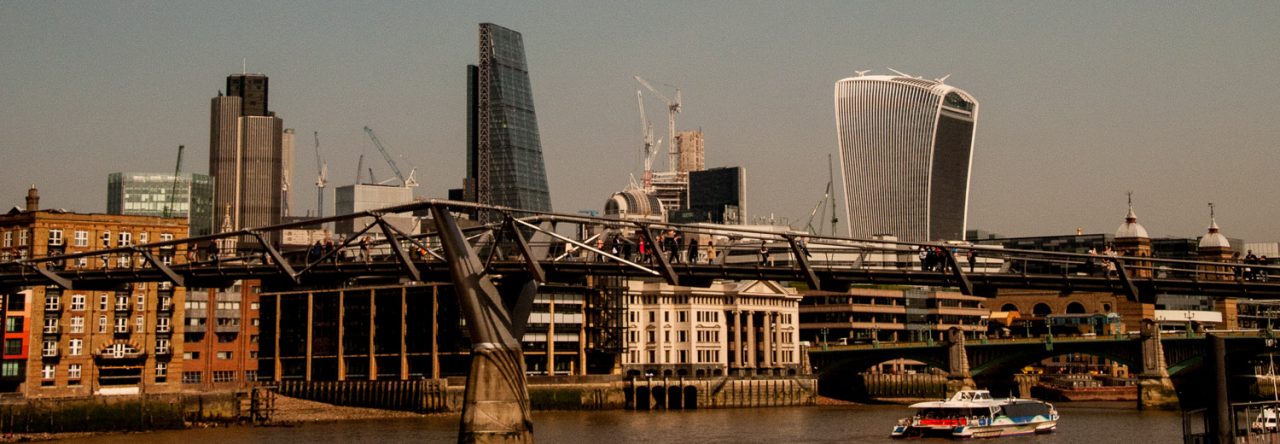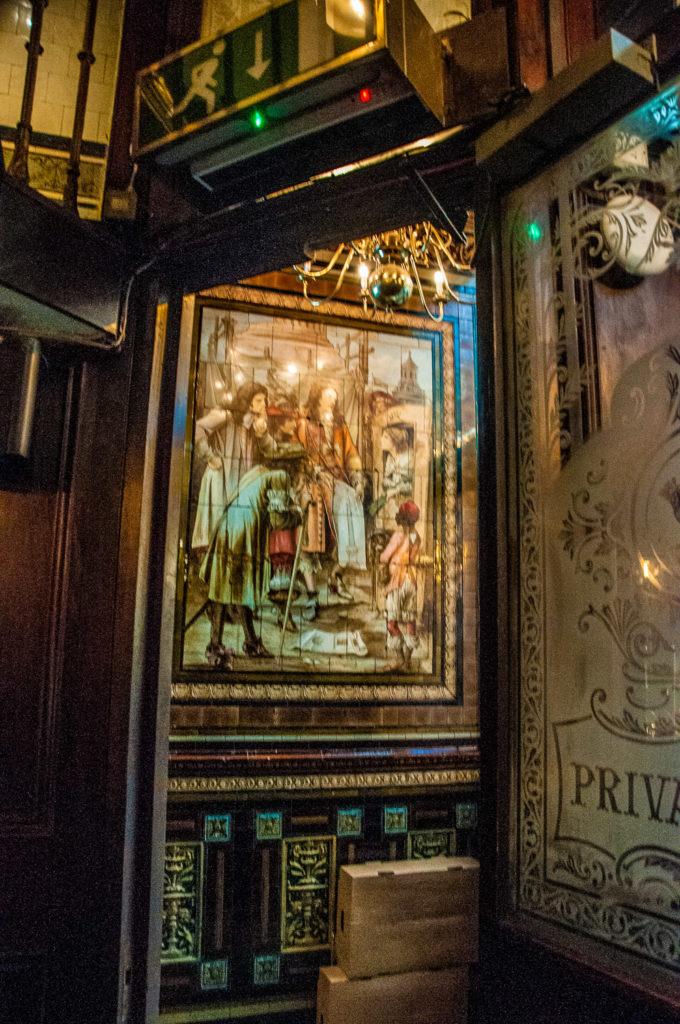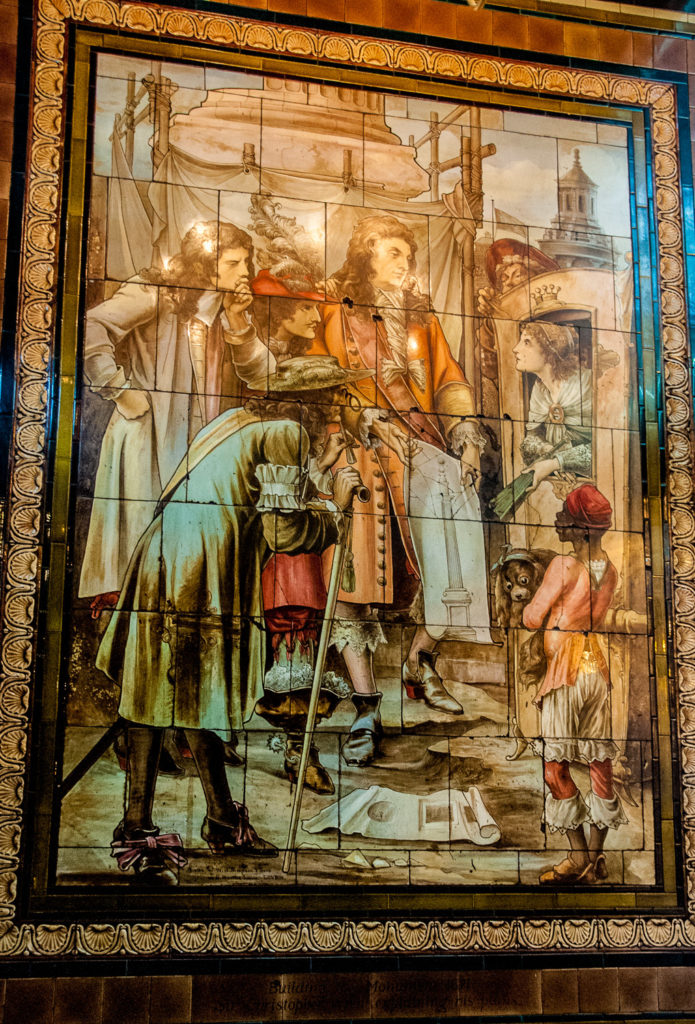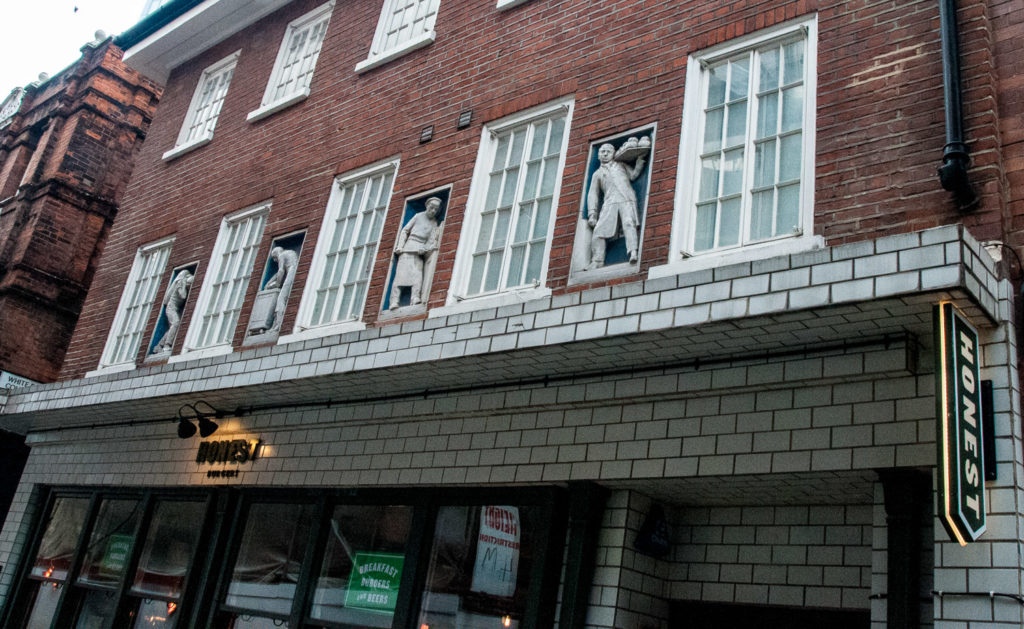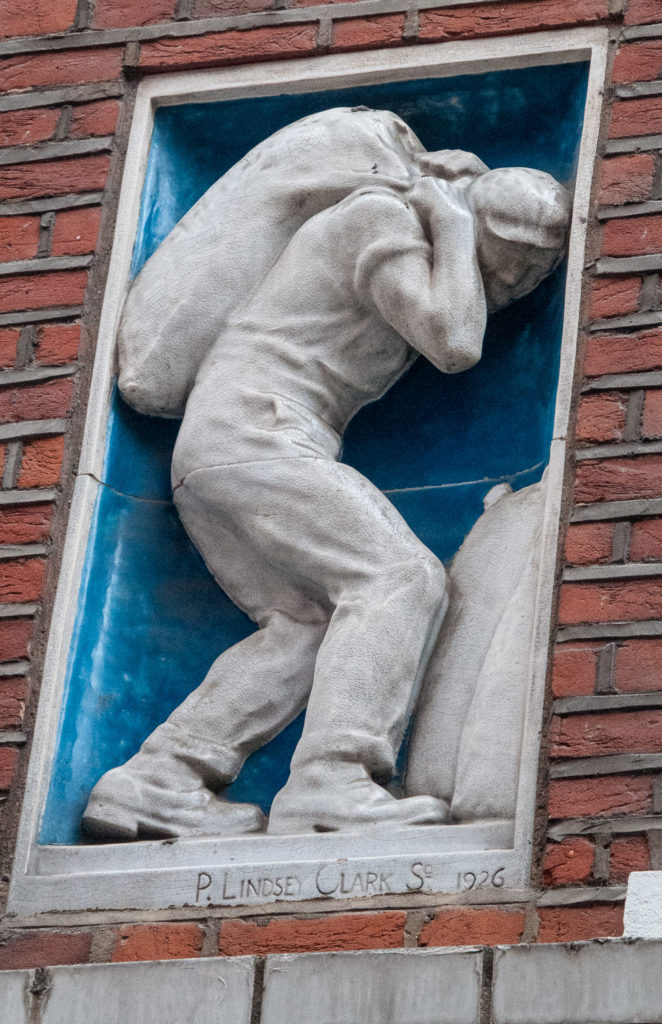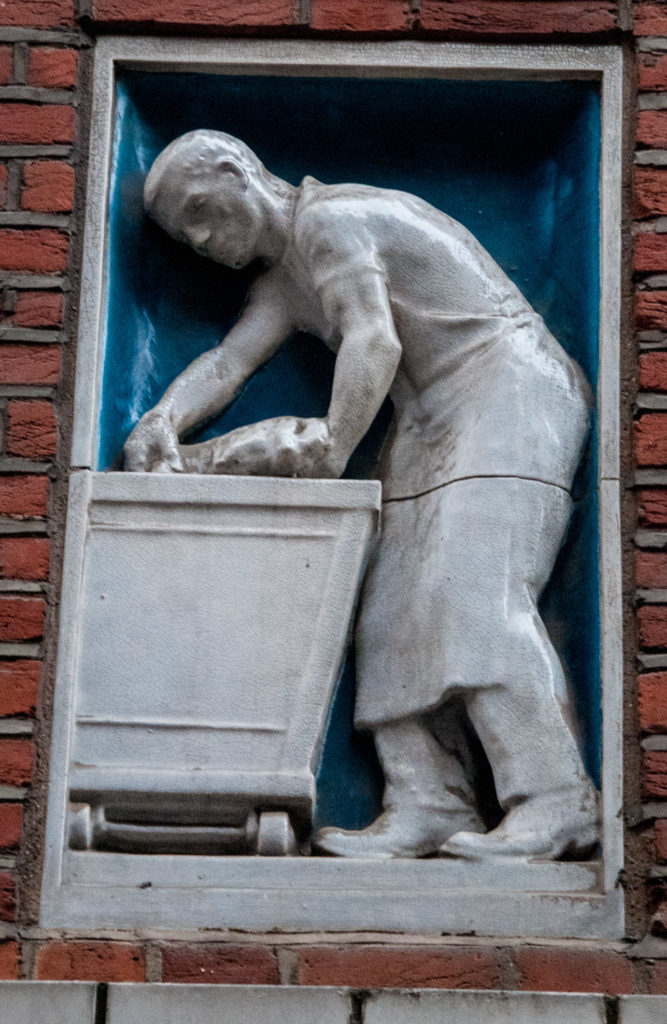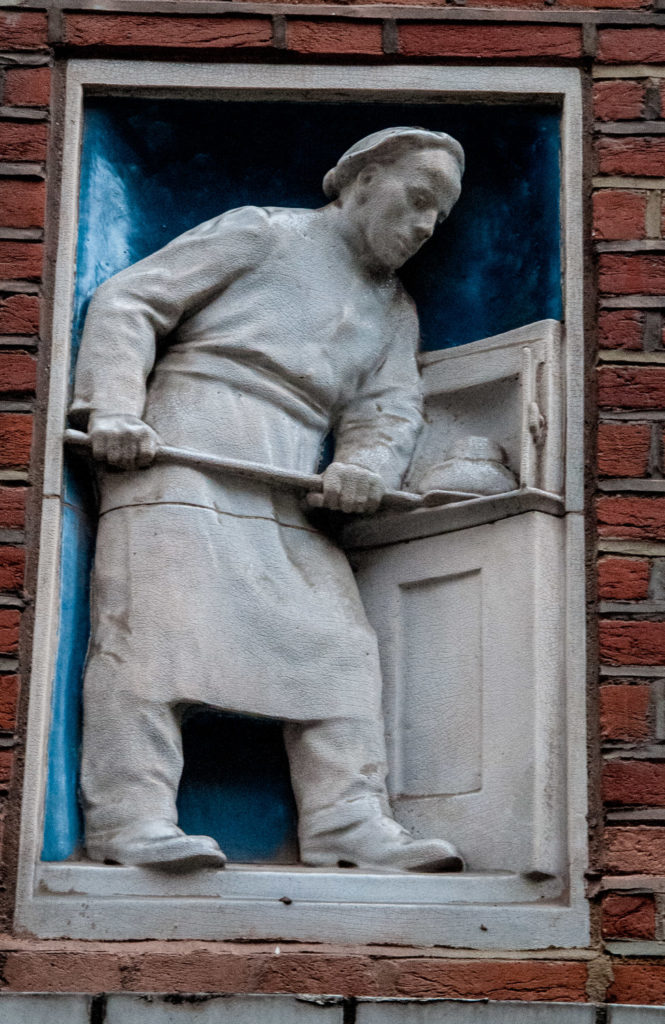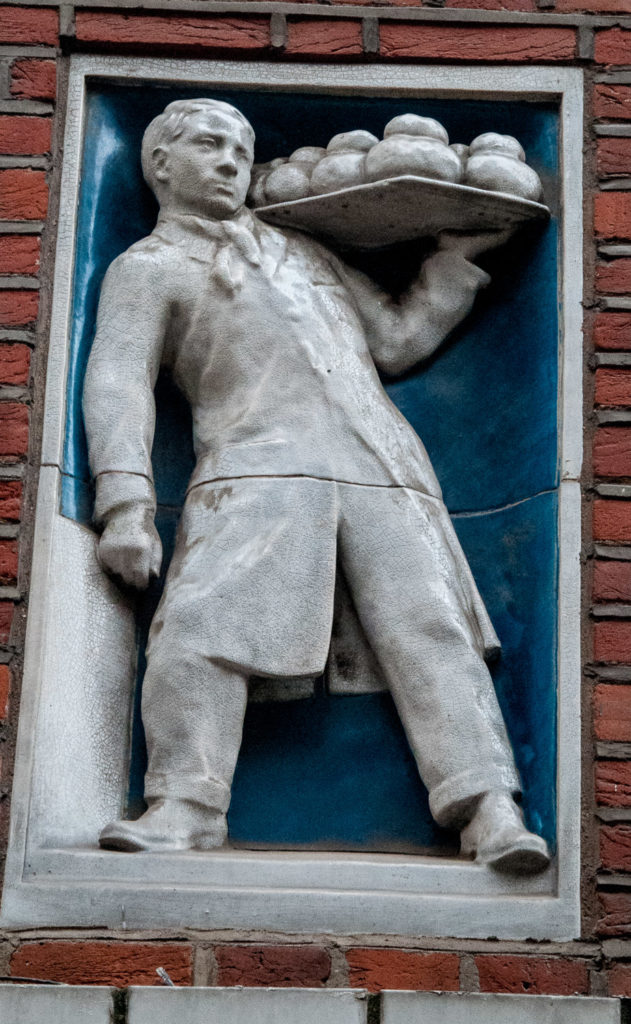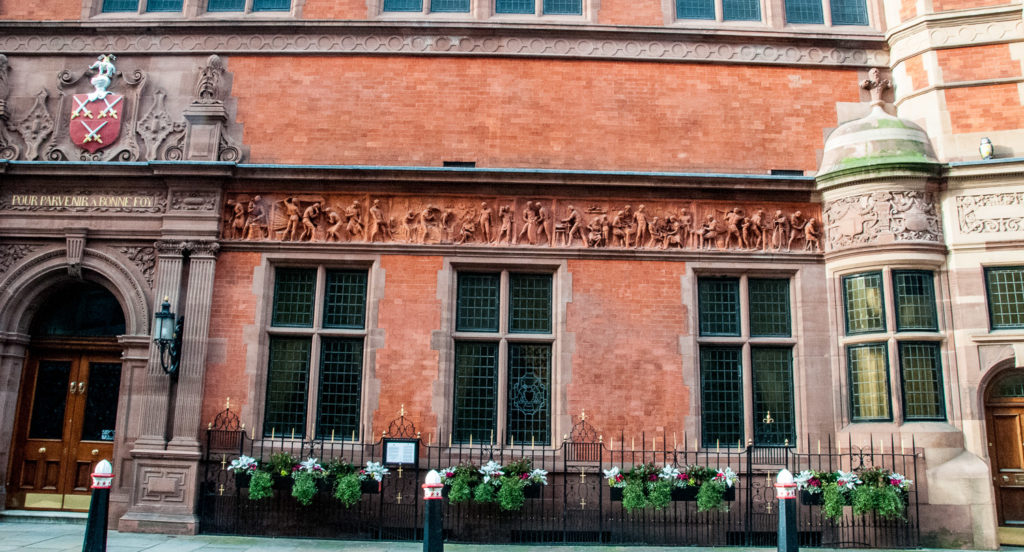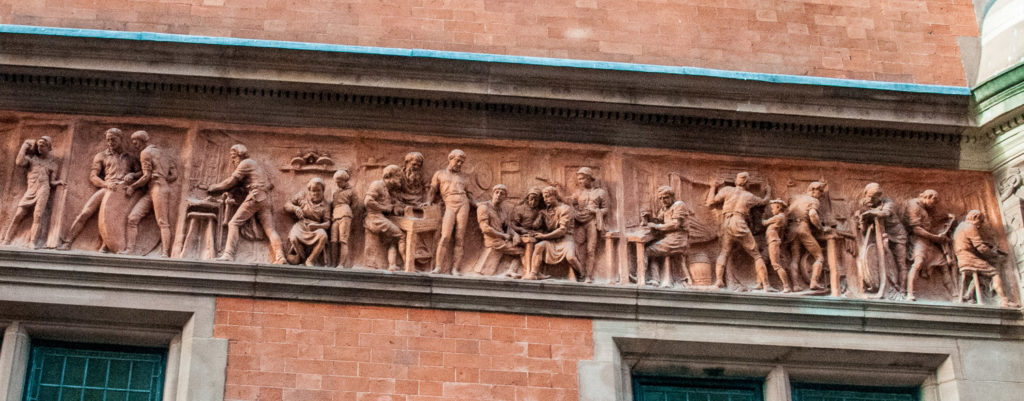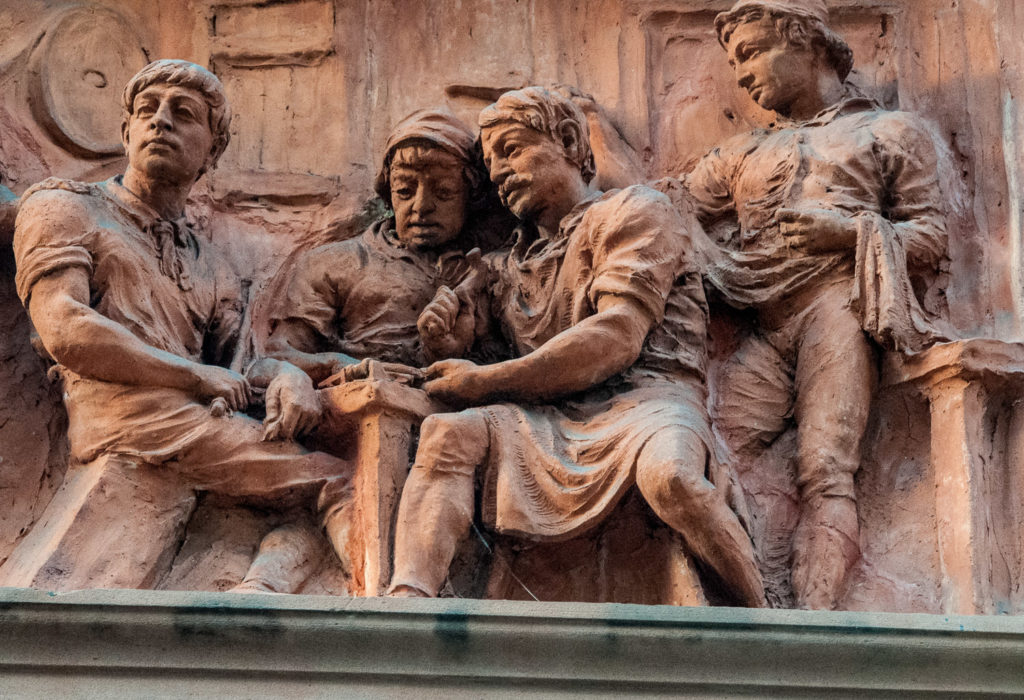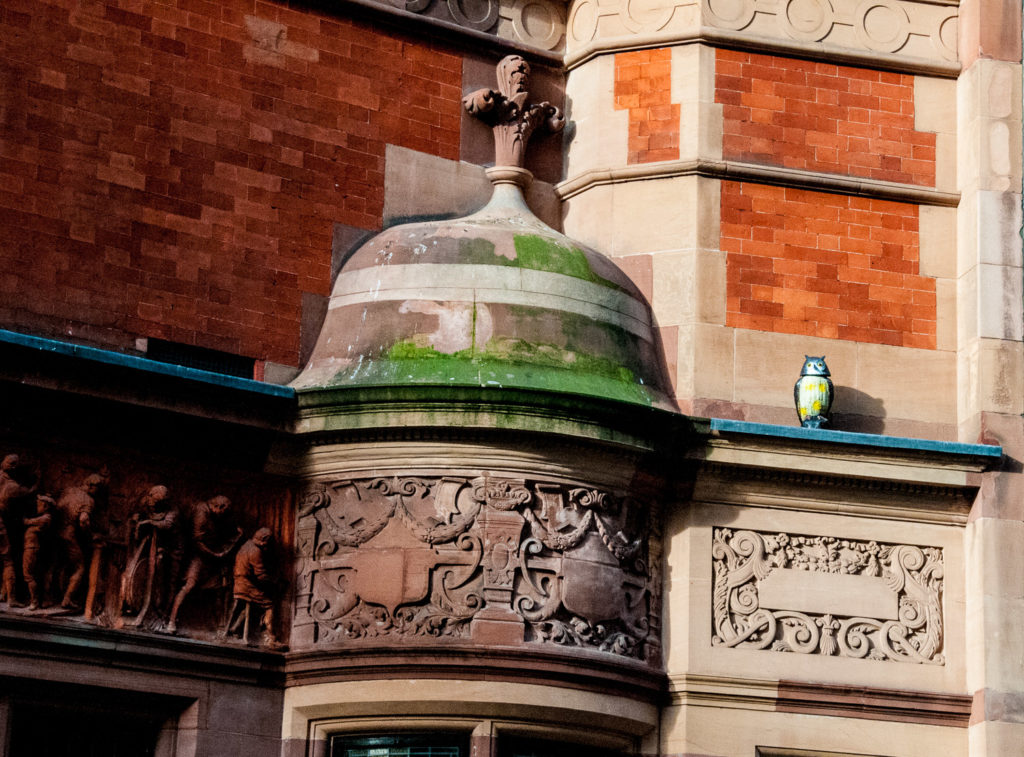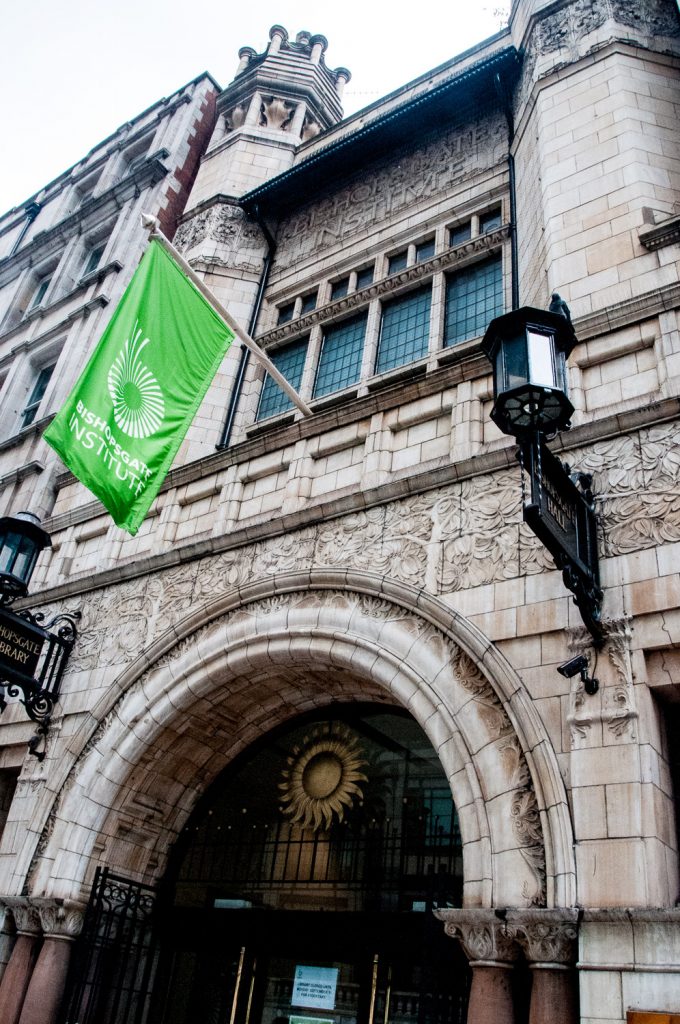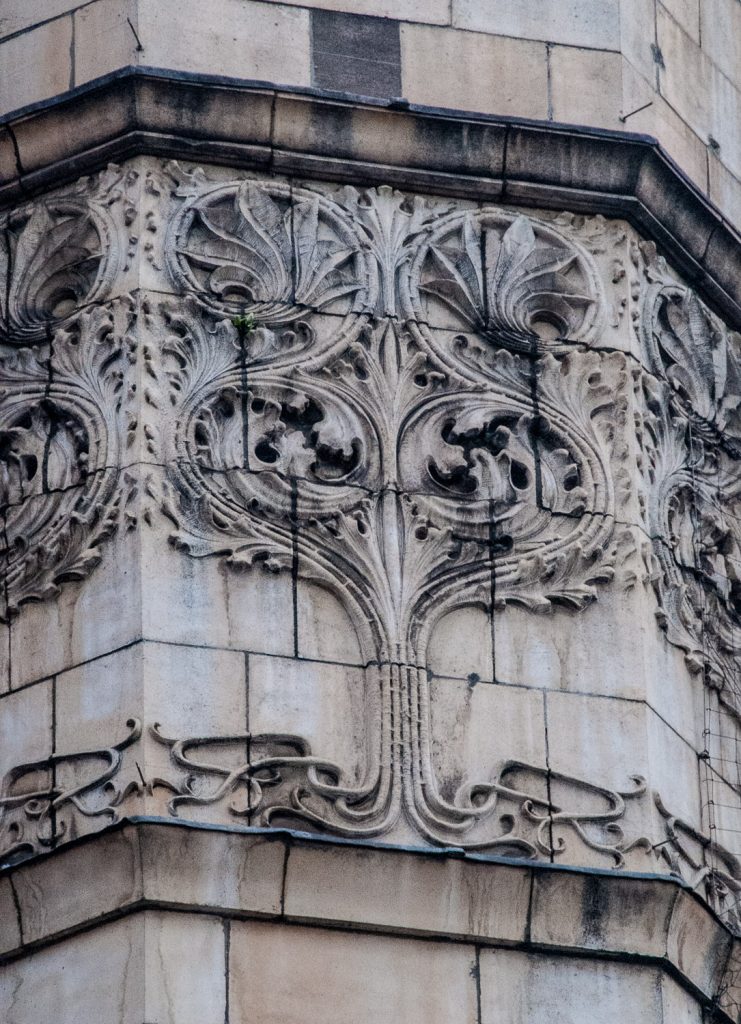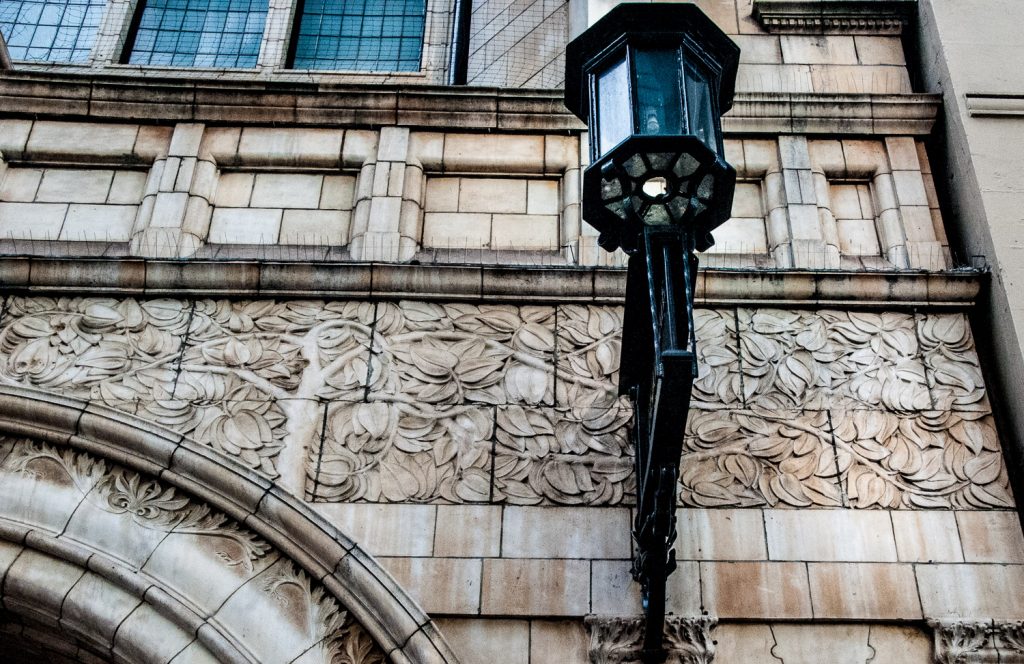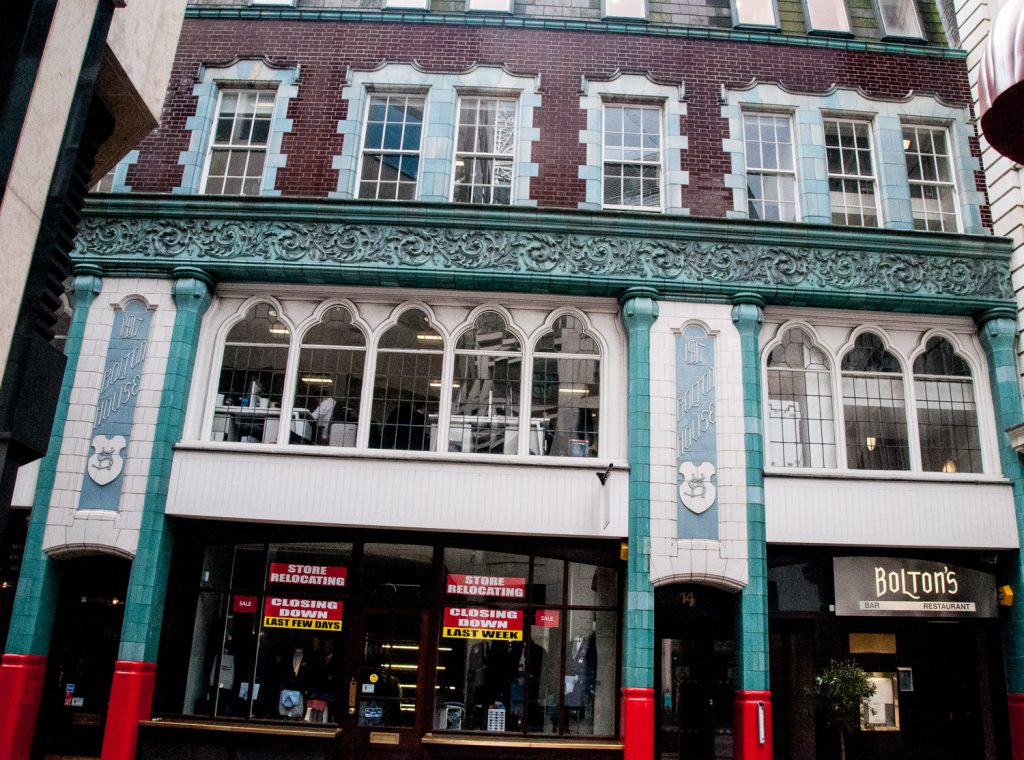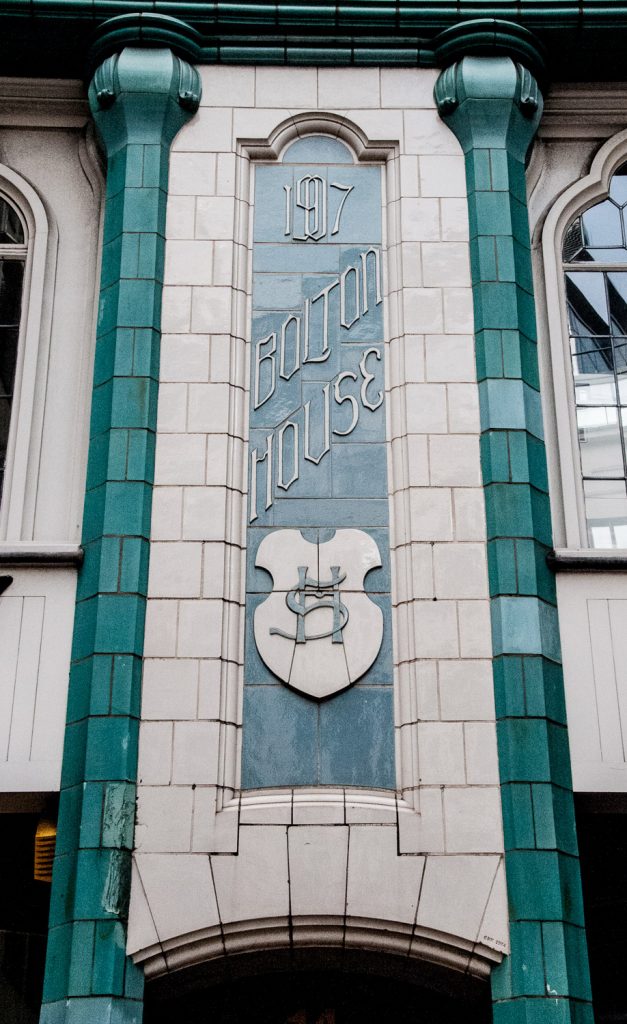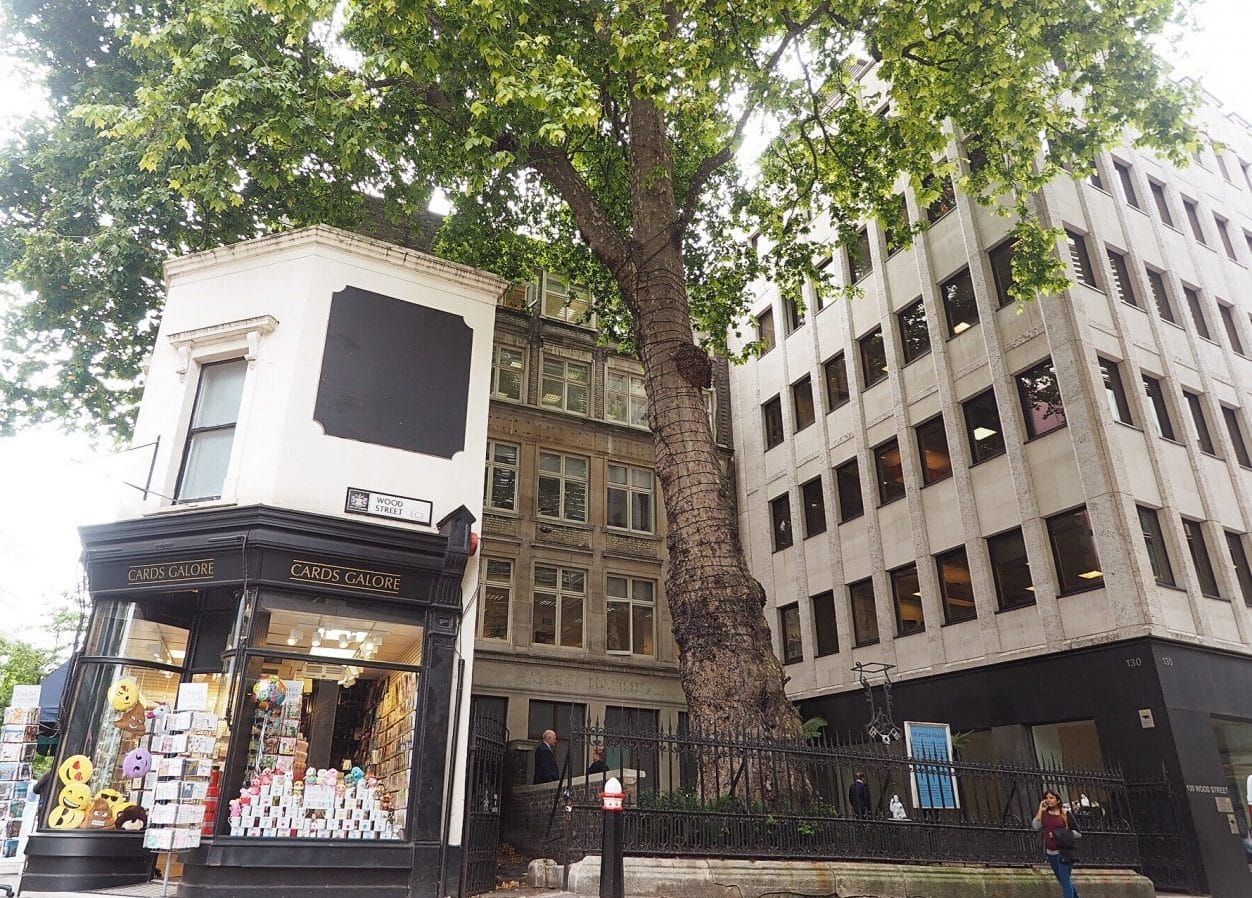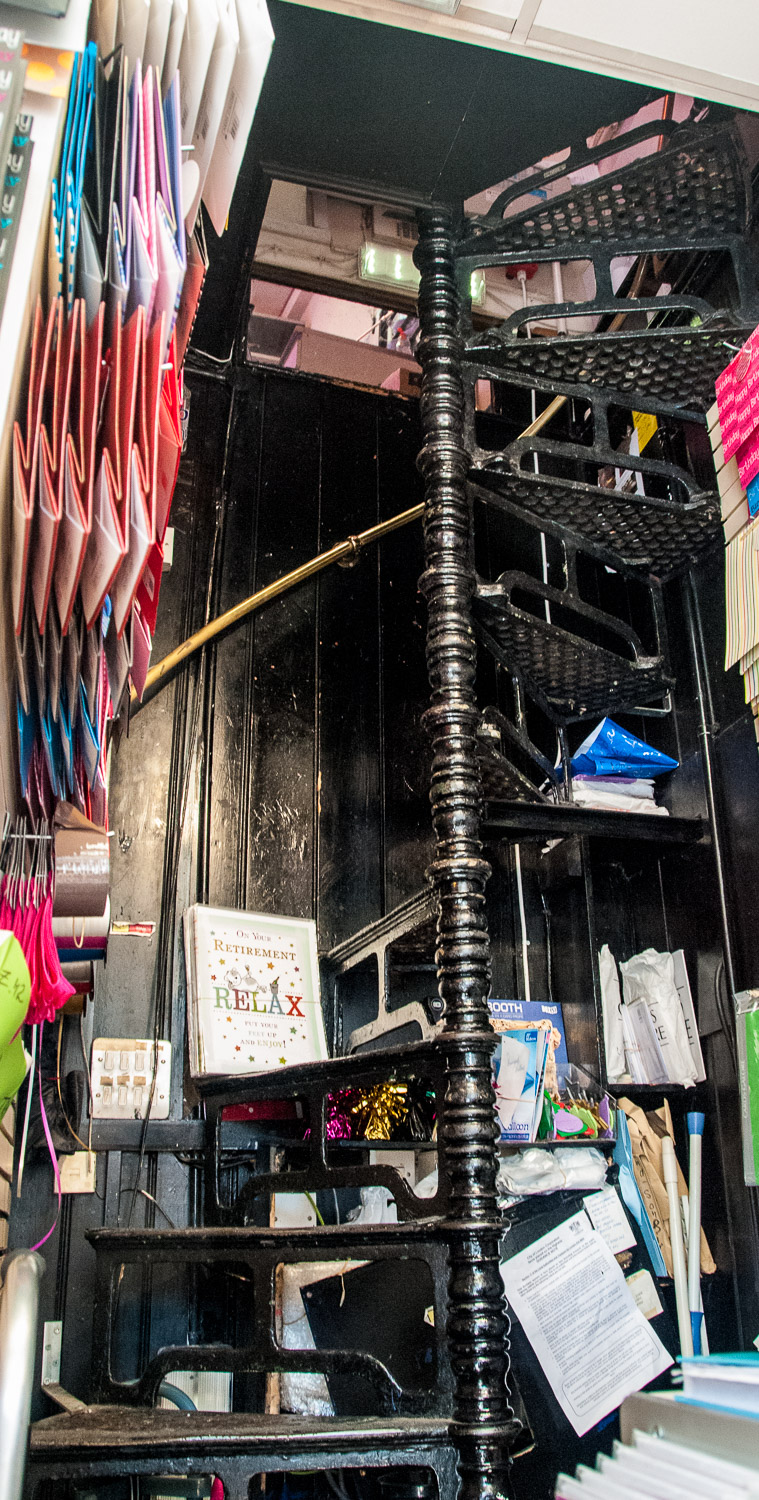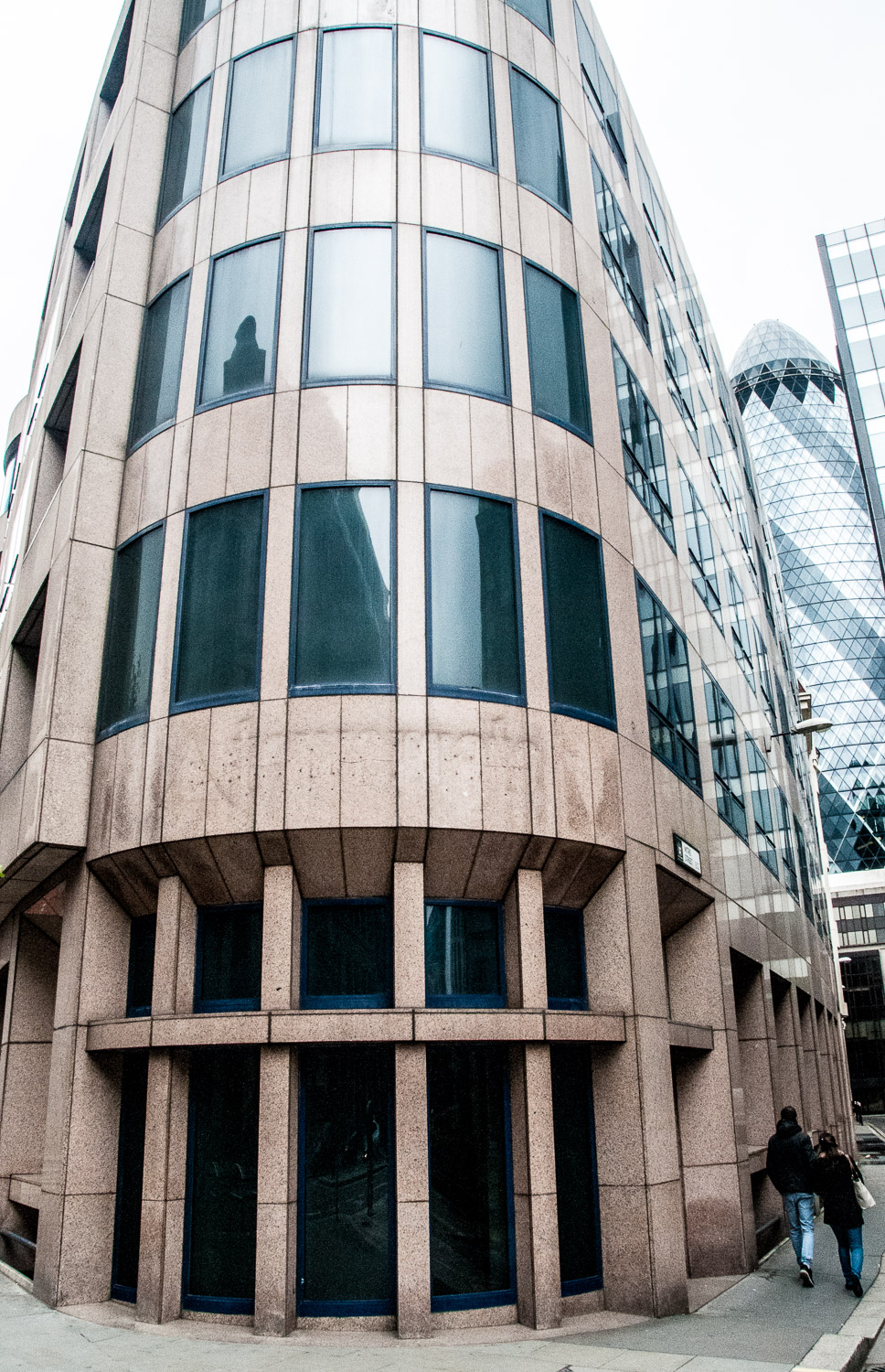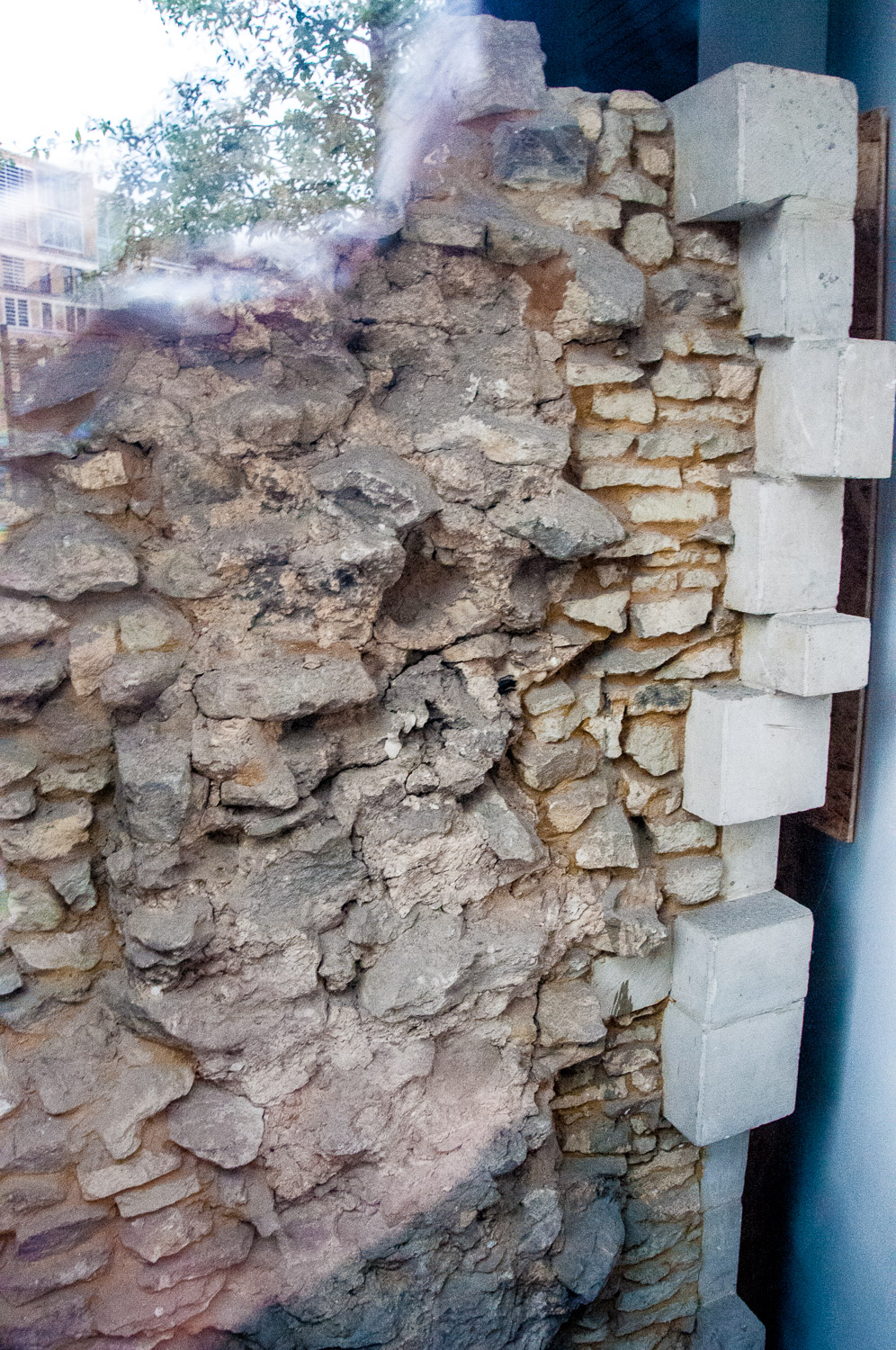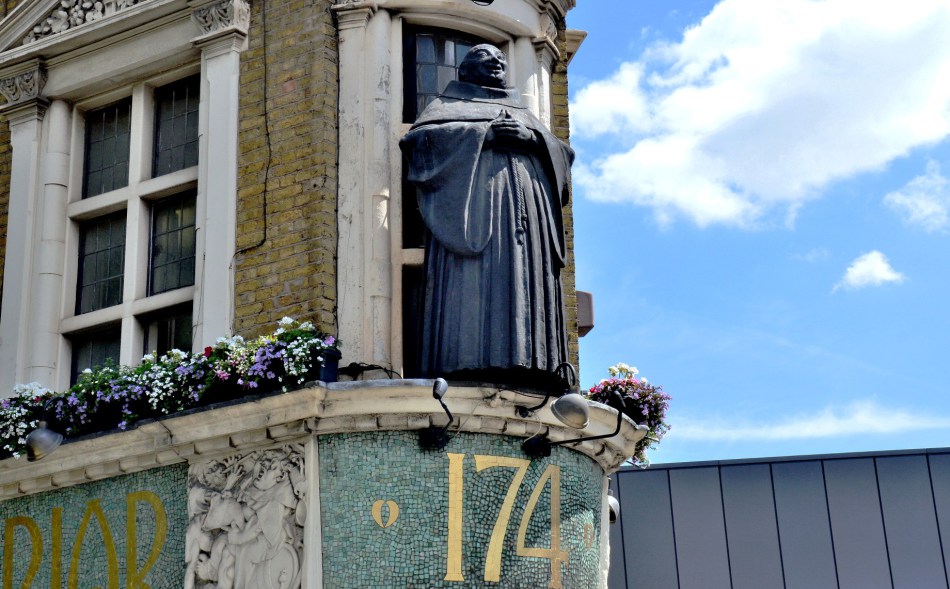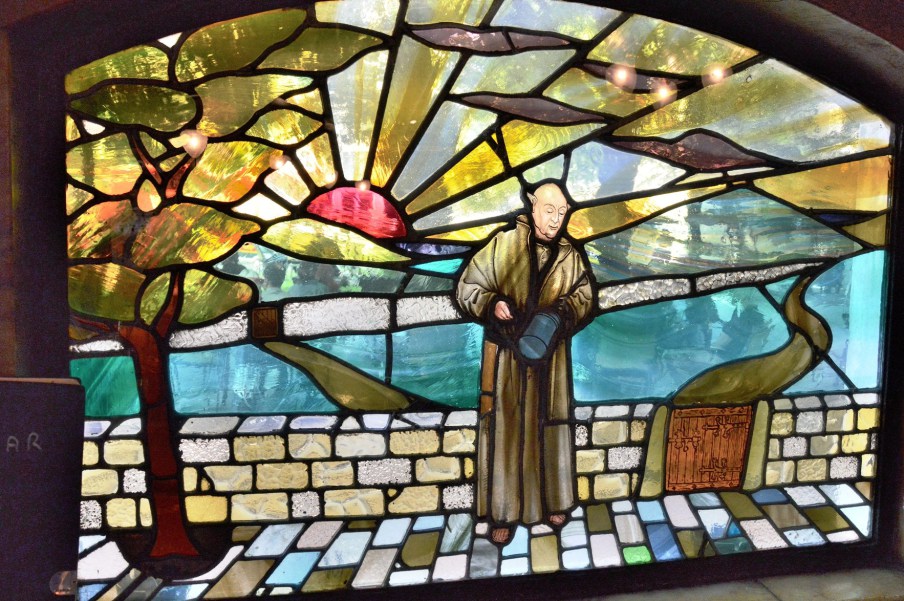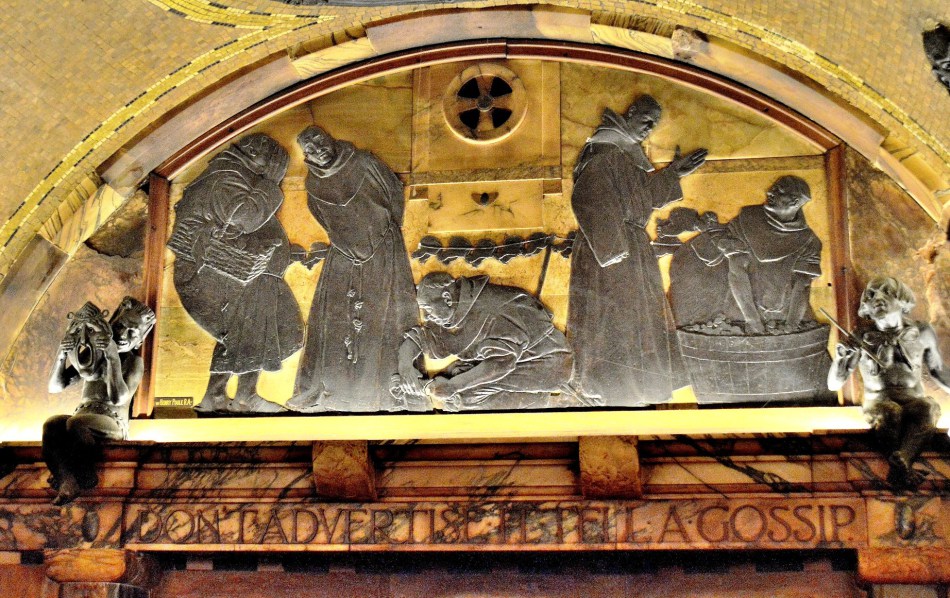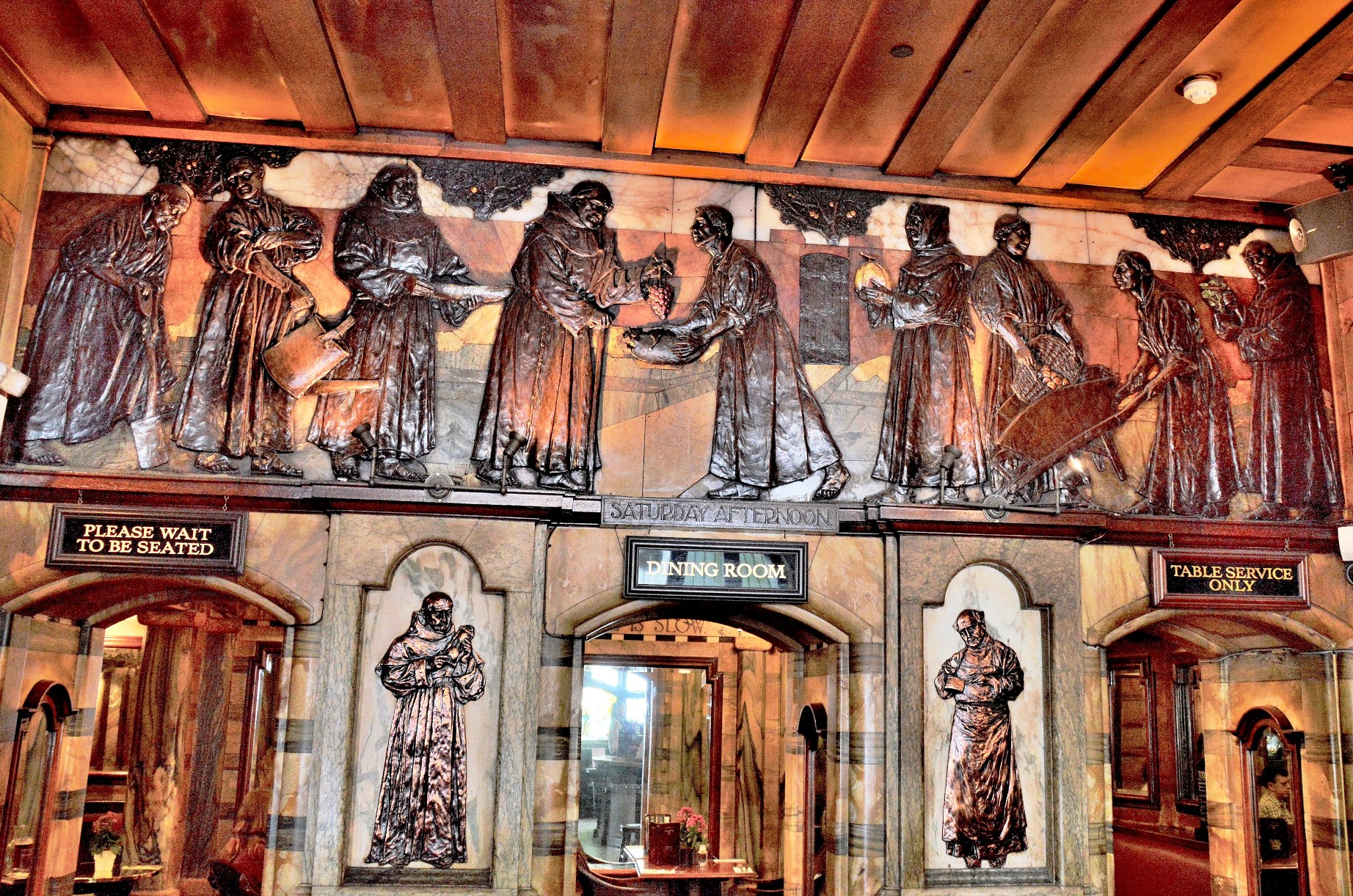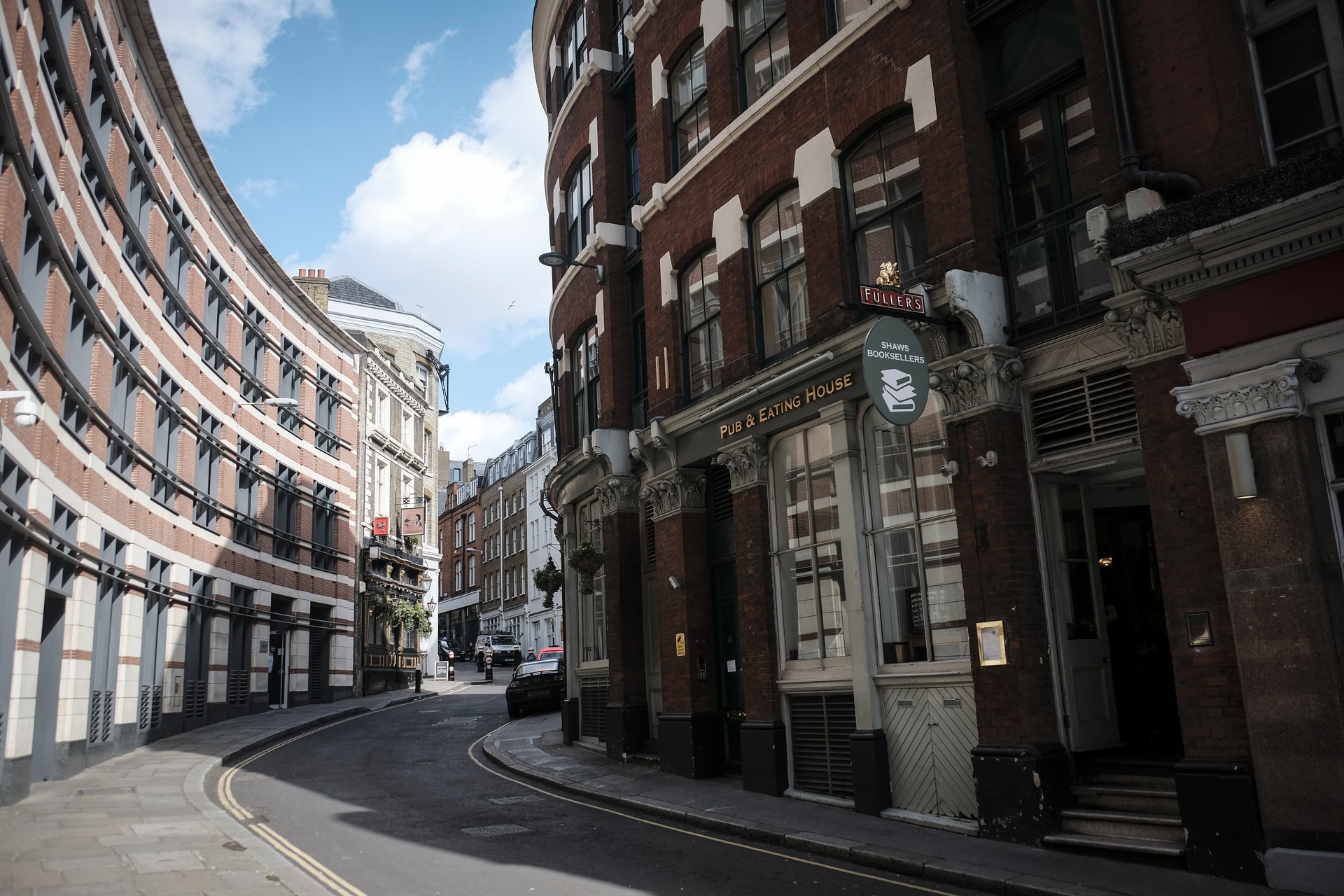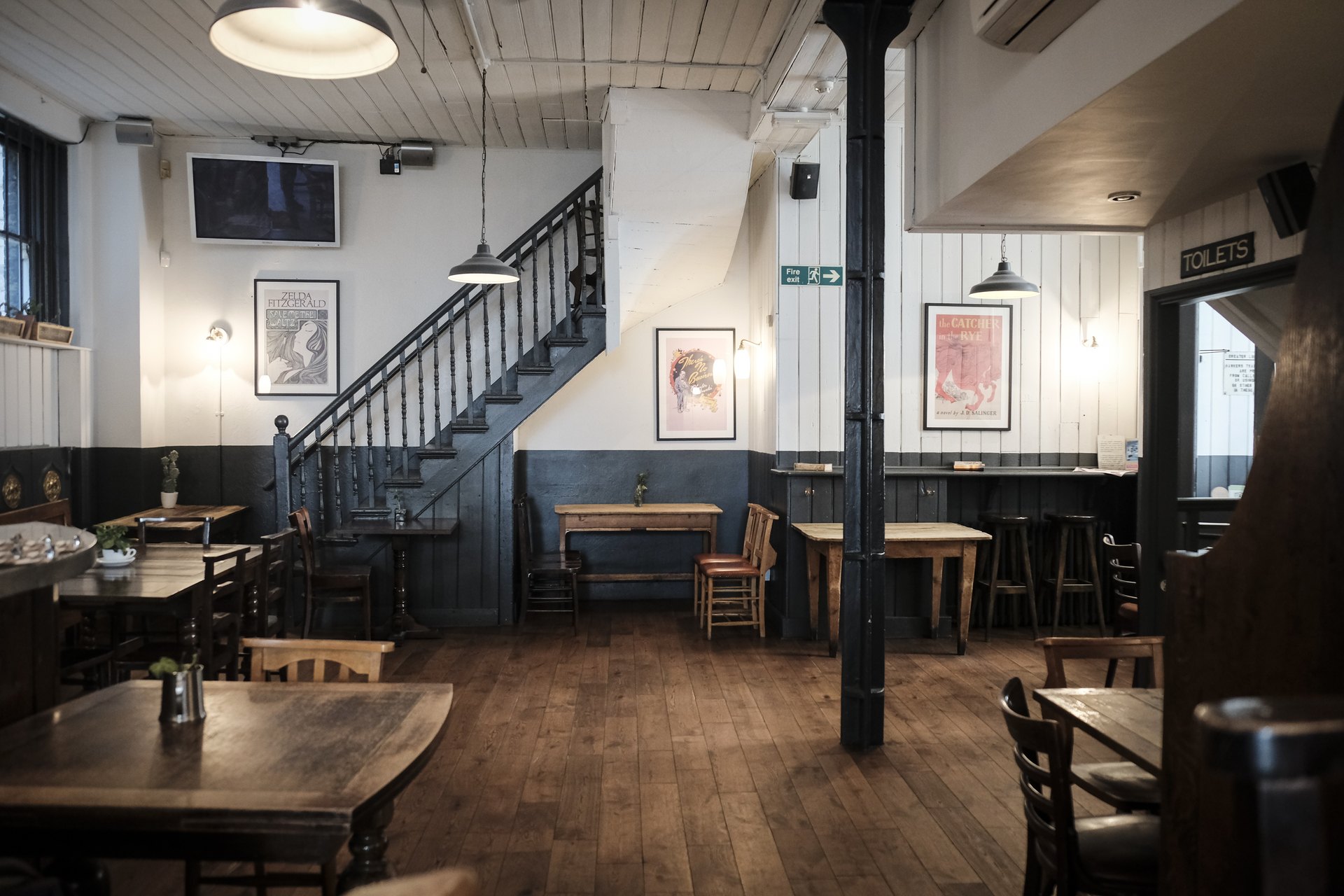I started my walk in Lime Street and just by Lloyd’s is the impressive Asia House. It was built in 1912-13 and designed by George Val Myer when he was only 30. His best known work is the BBC’s Broadcasting House on Portland Place …
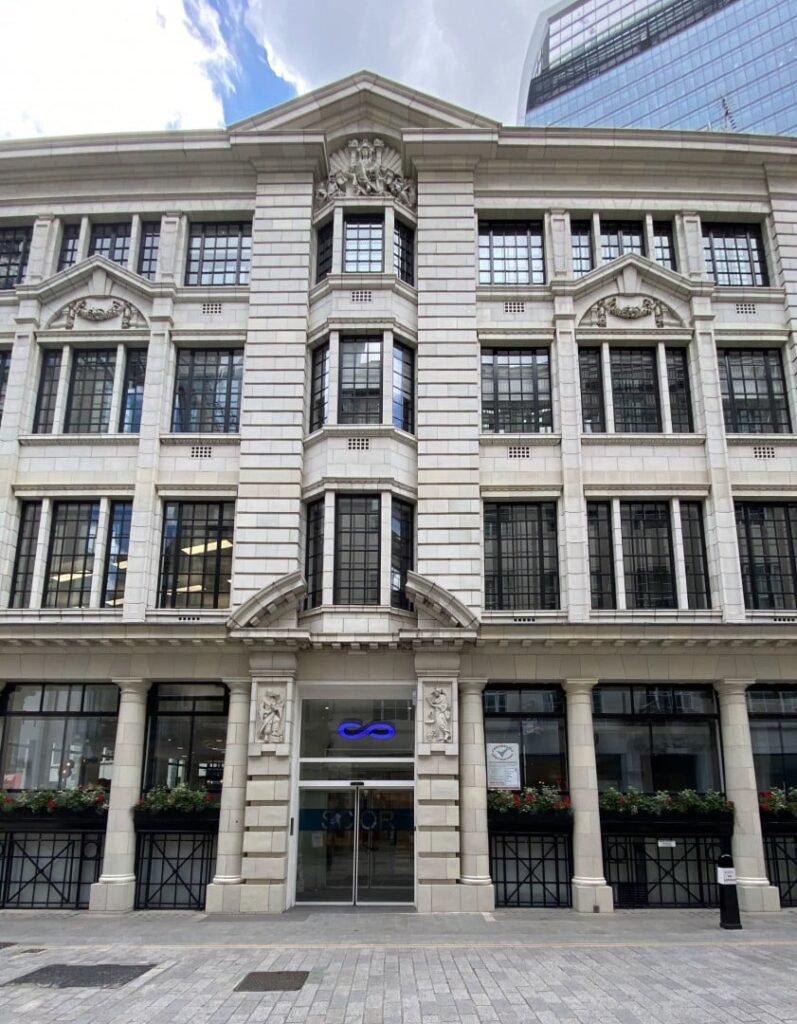
What makes it particularly interesting are the human figures. They were carved by John Broad of Doulton Ceramics and are entitled Japanese Man and Woman. He holds a model ship and a scroll …
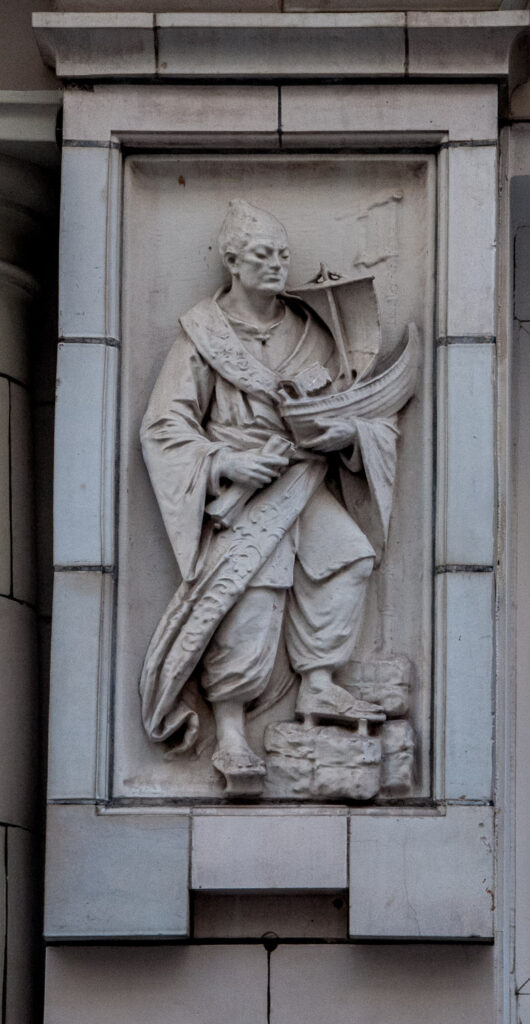
She holds a fan and a paintbrush. Although she isn’t described anywhere as a Geisha I have just made that assumption because she looks so elegantly traditional and is obviously demonstrating artistic talents …
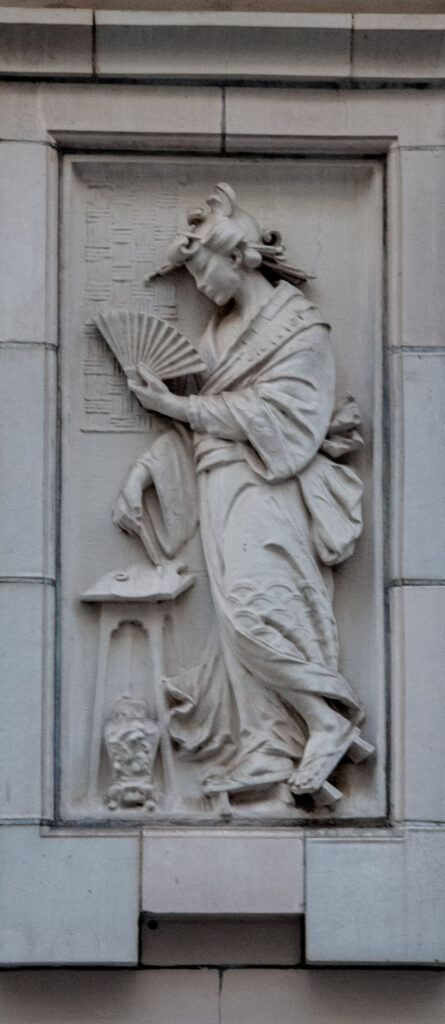
Beneath the pediment another lady sits enthroned, legs nonchalantly crossed, against a stylised sunburst motif …
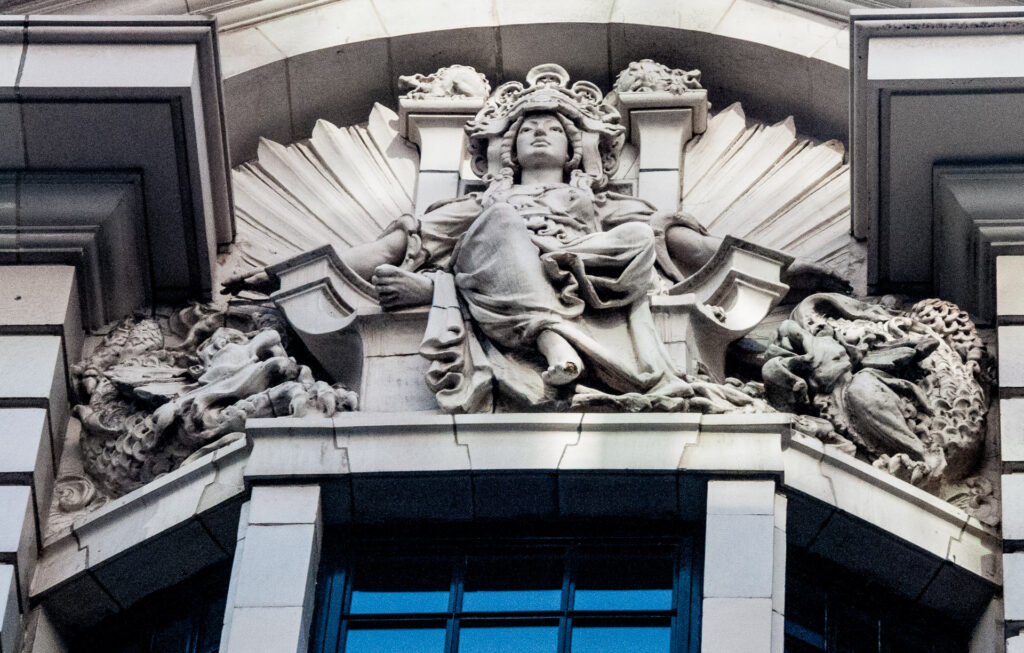
Her headgear is very elaborate and she has dragons to her right and left.
The building was originally the premises of Mitsui & Co Ltd, a Tokyo firm described in the 1913 Post Office Directory as ‘steamship owners and general commission merchants, export and import’. The current tenant is the Scor Reinsurance Company.
The new skyscraper on Bishopsgate looms over the Victorian market …
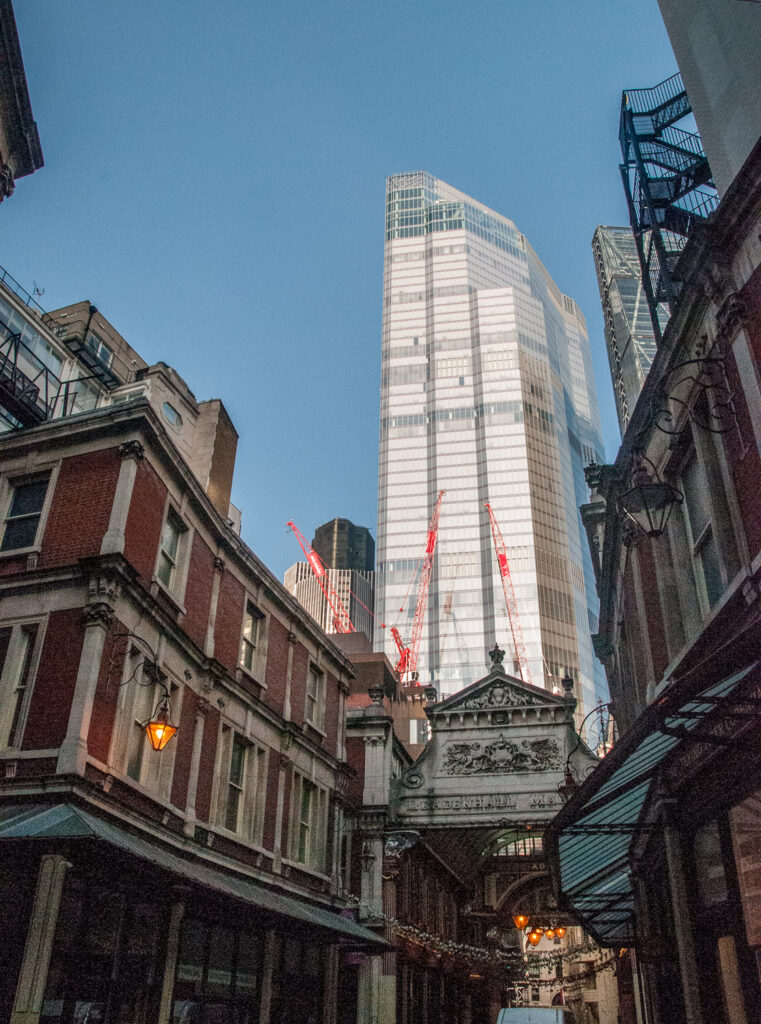
During my walk I came across three examples of the current Sculpture in the City initiative.
Inside the market is The Source by Patrick Tuttofuoco which ‘depicts the artist’s hands as he mimes some words conveyed using a sign language’ …
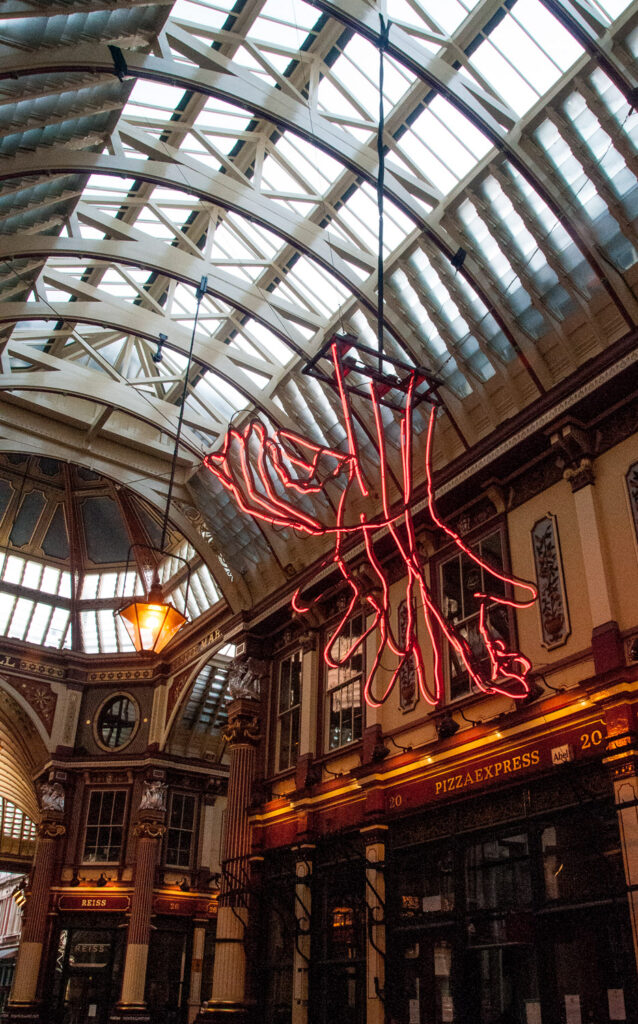
Opposite Lloyd’s is a sign indicating that you have arrived in Arcadia (Utopia) rather than just the main entrance to the Willis Towers Watson building …
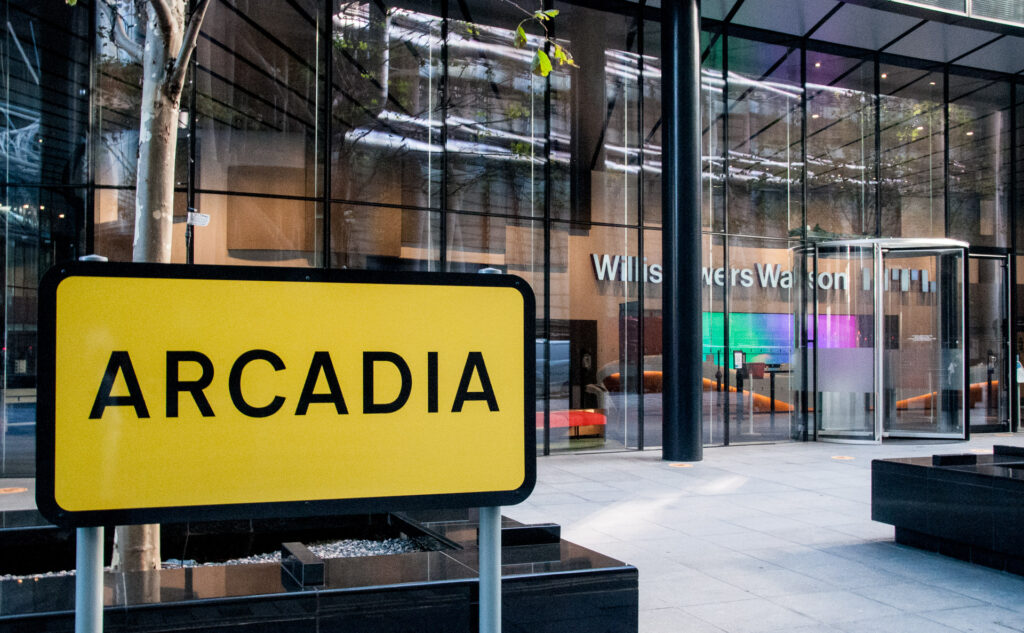
The artist, Leo Fitzmaurice, ‘has substituted the factual information, usually found on these signs, for something more poetic, allowing viewers to enjoy this material, along with the space around it in a new and more open-ended way’.
Nearby in Cullum Street (EC3M 7JJ) is Series Industrial Windows 1 by Marisa Ferreira …
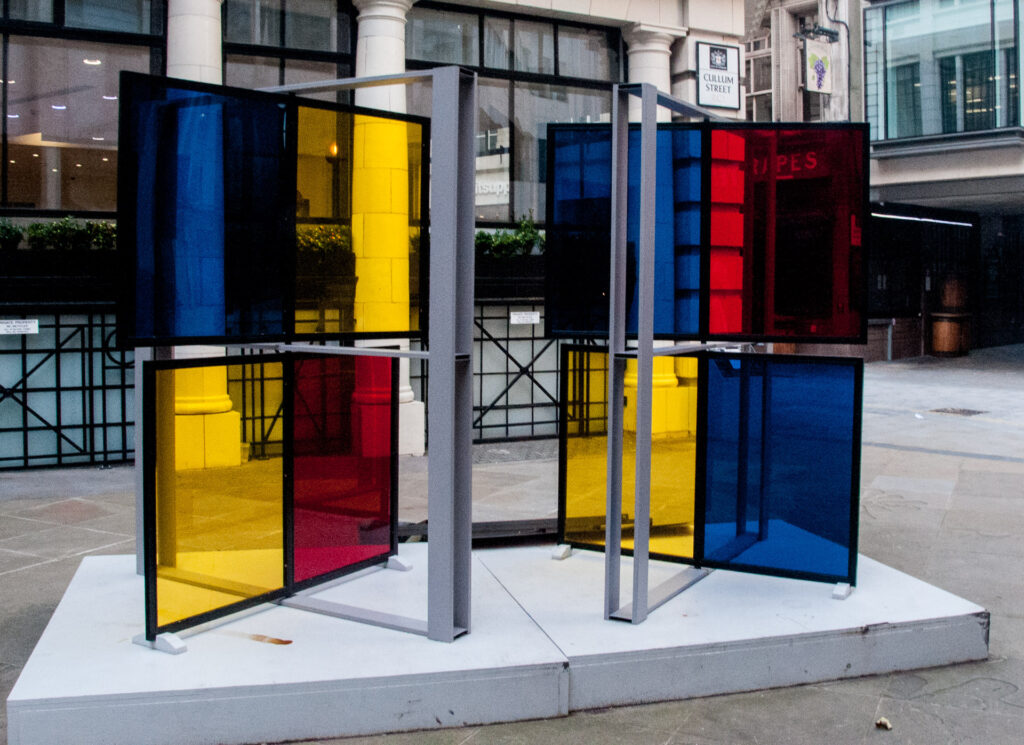
The information notice tells us that ‘the artwork invokes Pierre Nora’s notion of ‘lieux de mémoire’ to reflect the urban landscape as fragment, memory and vision and to question how industrial ruins solicit affective, imaginative and sensual engagements with the past’.
Also in Cullum Street is the unusual Art Nouveau Bolton House. I haven’t been able to find out a lot more about it apart from the architect (A. Selby) and that it’s reportedly named after Prior Bolton who had close connections with St Bartholomew the Great (which I have written about here).
It’s blue and white faience with strong Moorish influences …
The building was completed in 1907, a few years before Art Nouveau went out of fashion.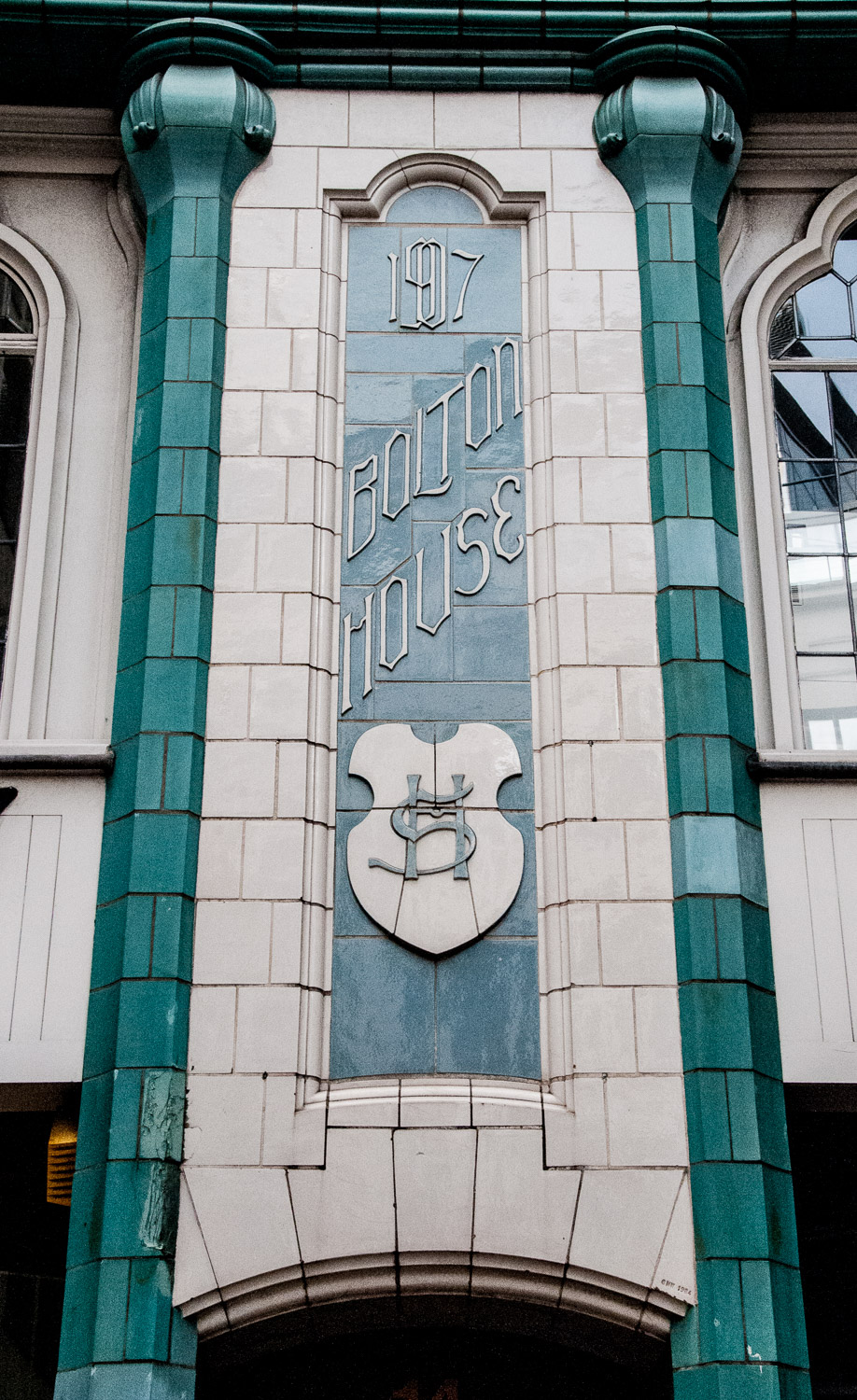
In the market again, I always smile when I come across Old Tom’s Bar …
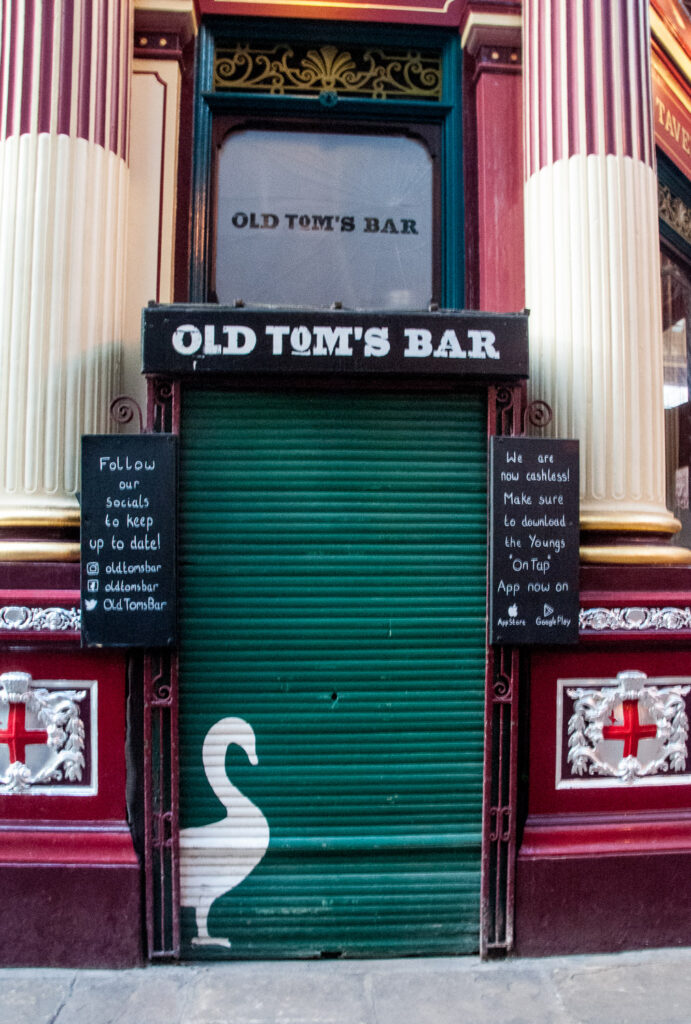
Old Tom was a gander from Ostend in Belgium who is said to have arrived in the Capital having followed a female member of his flock who took his fancy! Despite the swift dispatch of the other 34,000 members of his party, somehow Tom miraculously managed to survive the dinner table and became a regular fixture at the market and the surrounding inns, who kept scraps aside for him.
So beloved was Old Tom that he even made it into the Times Newspaper! Below is his obituary, published on 16 April 1835:
In memory of Old Tom the Gander.
Obit 19th March, 1835, aetat, 37 years, 9 months, and 6 days.
‘This famous gander, while in stubble,
Fed freely, without care or trouble:
Grew fat with corn and sitting still,
And scarce could cross the barn-door sill:
And seldom waddled forth to cool
His belly in the neighbouring pool.
Transplanted to another scene,
He stalk’d in state o’er Calais-green,
With full five hundred geese behind,
To his superior care consign’d,
Whom readily he would engage
To lead in march ten miles a-stage.
Thus a decoy he lived and died,
The chief of geese, the poulterer’s pride.’
Unfortunately, I can find no reliable contemporary picture of him. Despite claims to the contrary, he is not represented, along with a little boy, above the old Midland Bank Building on Poultry. The goose there was a suggestion by the architect Sir Edwin Lutyens to commemorate its original market function.
On my way to the Cheesegrater I spotted this reflection of the Gherkin in the glass walls of The Scalpel along with two of the crosses on St Andrew Undershaft’s pinnacles …
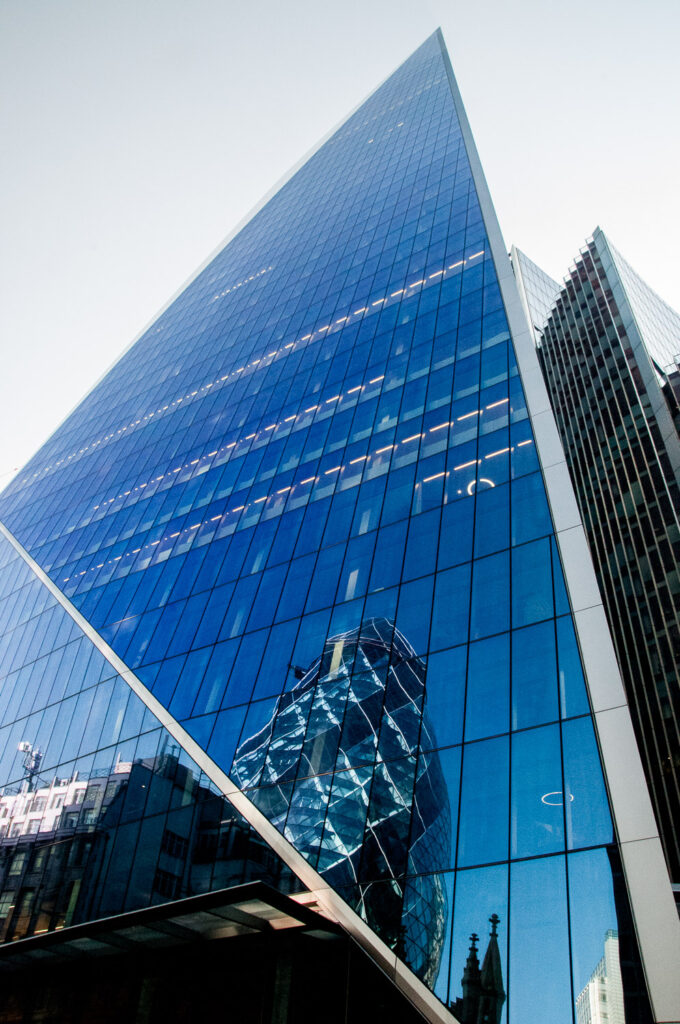
Outside the Cheesegrater, this Godlike figure entitled Navigation holds a passenger ship in his left hand and is flanked by a binnacle and a ship’s wheel. Originally owned by the P&O Banking Corporation, he once looked down from the facade of their building at the junction of Leadenhall Street and St Mary Axe. I smiled because he seems to be glancing rather suspiciously at the replica maypole that has been installed next to him …
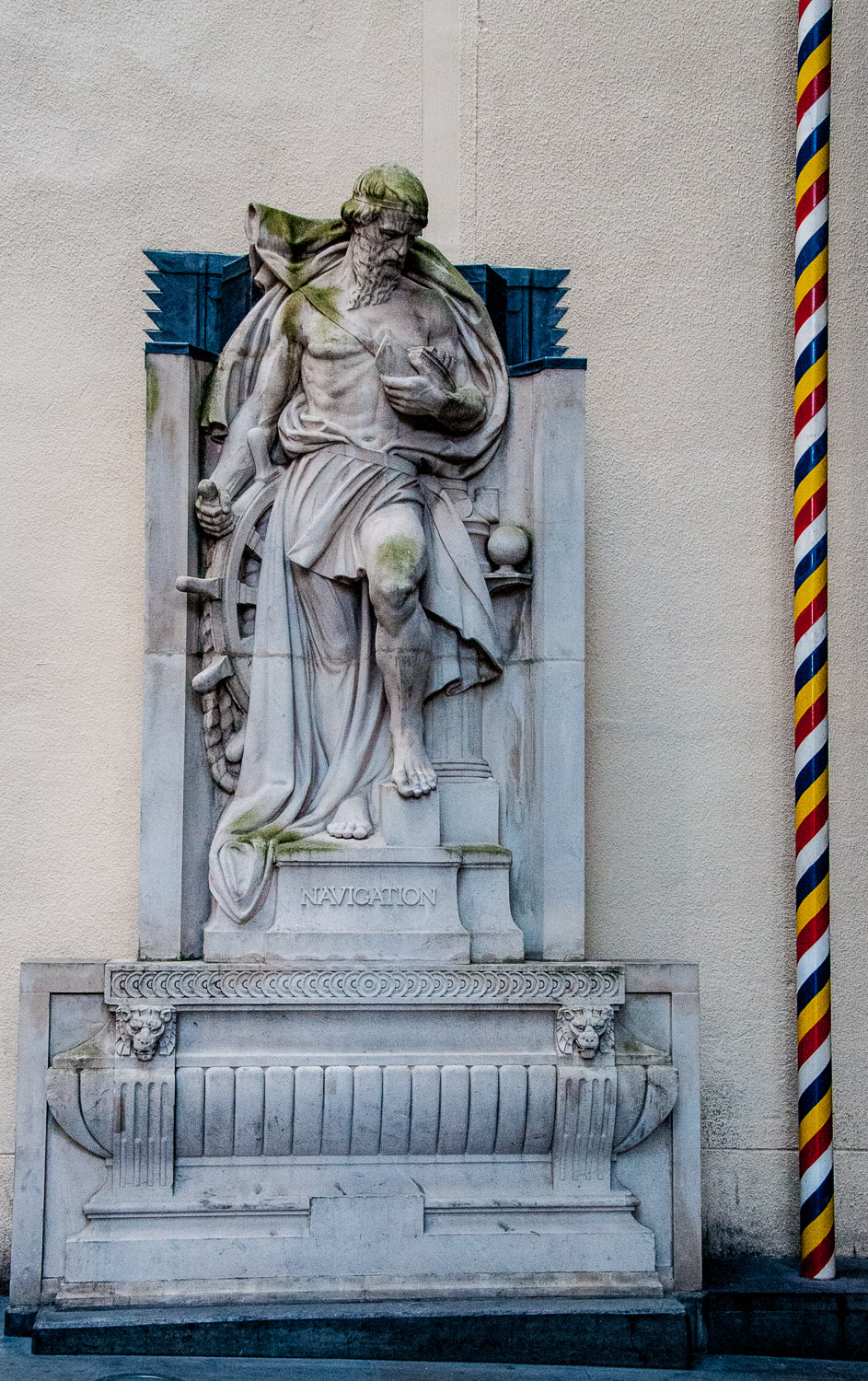
It references the maypole that once stood nearby outside St Andrew Undershaft (so called because the maypole alongside it was taller than the church). The pole was set up opposite the church every year until Mayday 1517 when the tradition was suspended after the City apprentices (always a volatile bunch) rioted against foreigners. Public gatherings on Mayday were therefore to be discouraged and the pole was hung up nearby in the appropriately named Shaft Alley. In 1549 the vicar of St Catharine Cree denounced the maypole as a pagan symbol and got his listeners so agitated they pulled the pole from its moorings, cut it up and burned it.
Here is a picture of the church around 1910. You can see the Navigation statue on the building on the left …
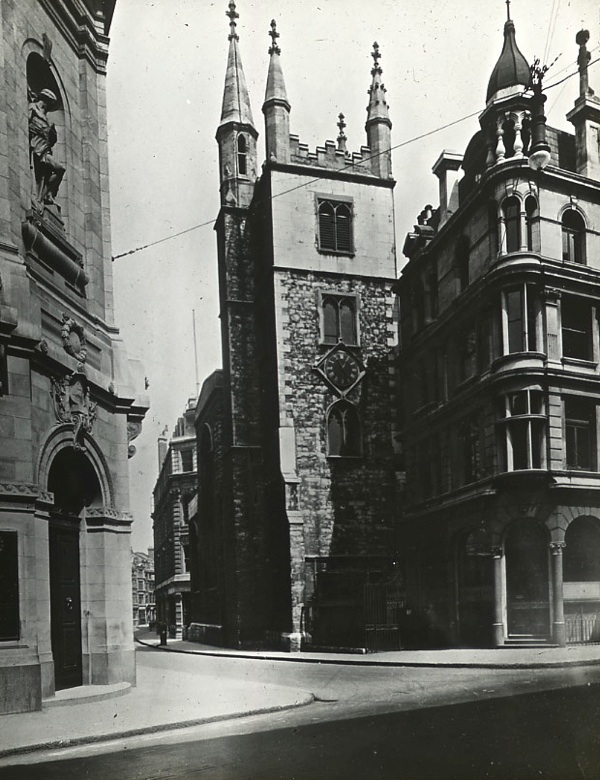
The area has been brightened up recently with the ventilation exits covered in bold designs …
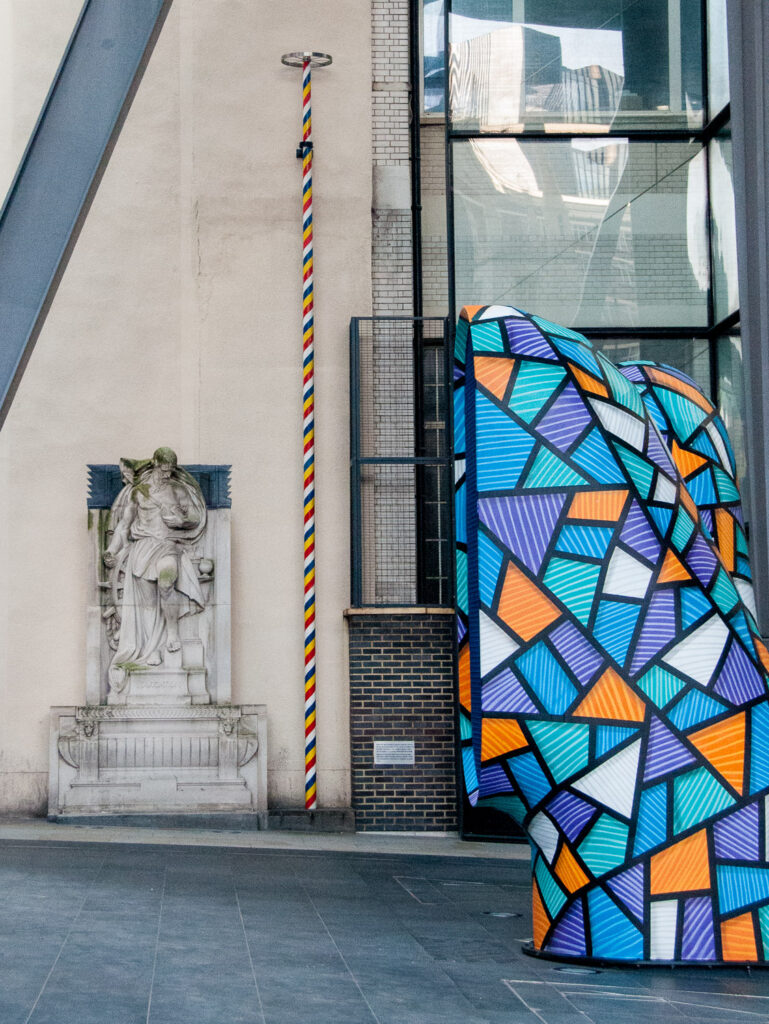
On a lighthearted note, I am collecting pictures of weird and creepy clothes models. There are these in Lime Street …
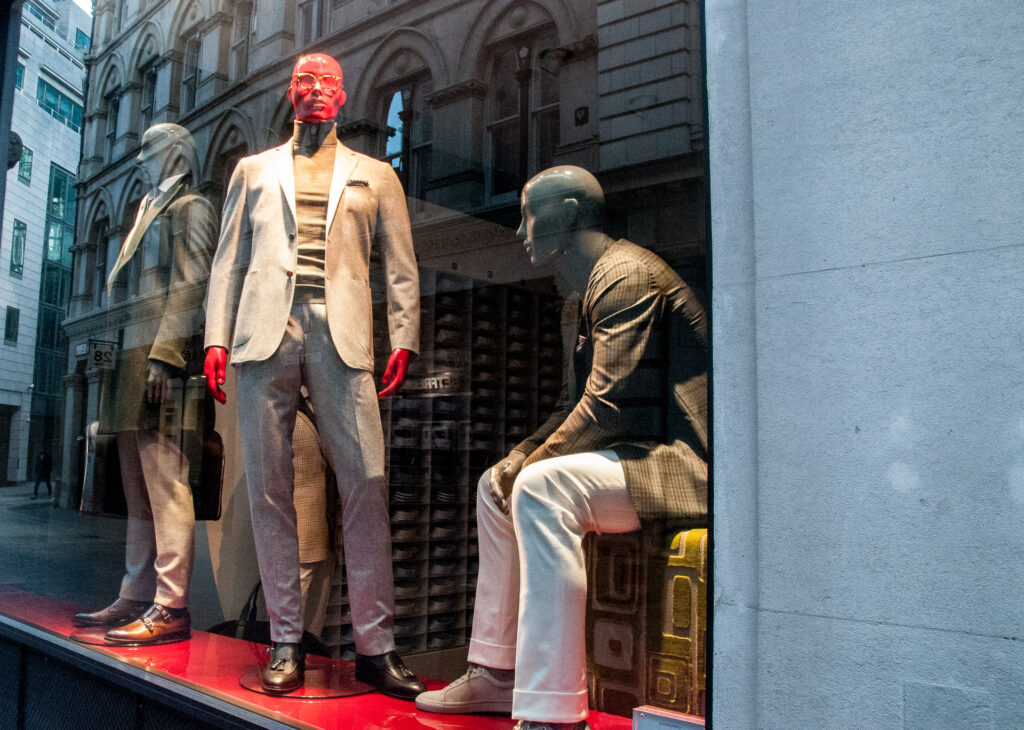
To add to these in Eastcheap …
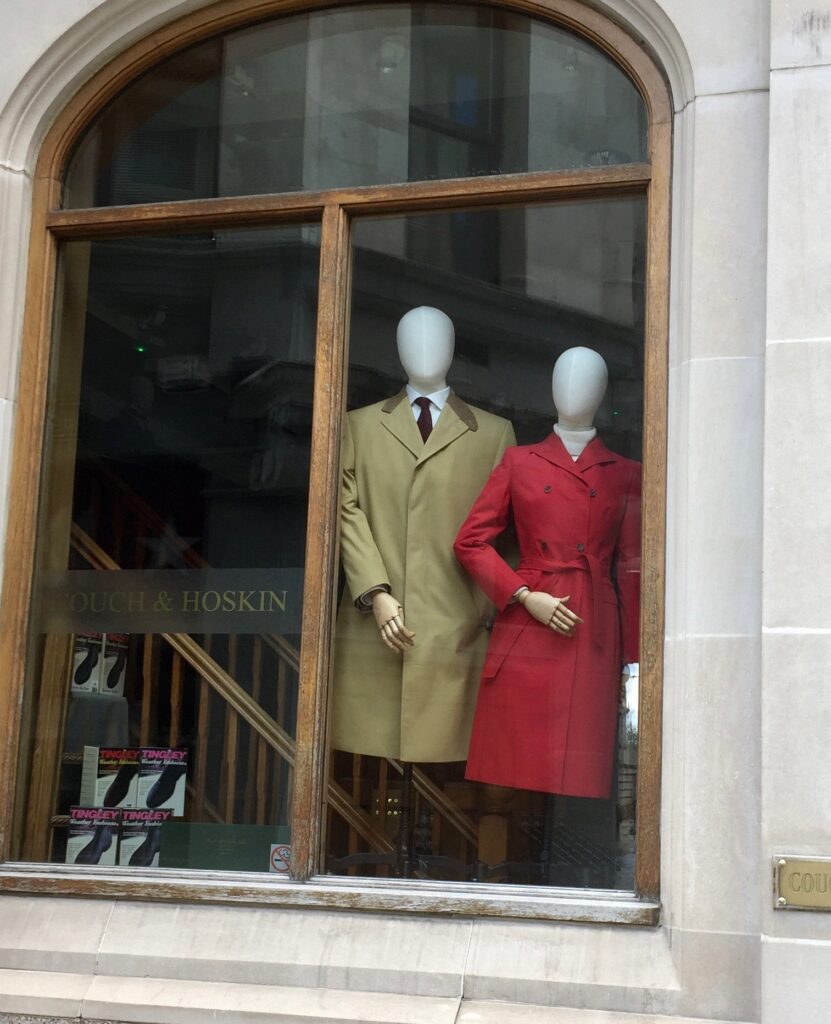
And finally, an old Japanese proverb pasted on to the window of a temporarily closed restaurant …
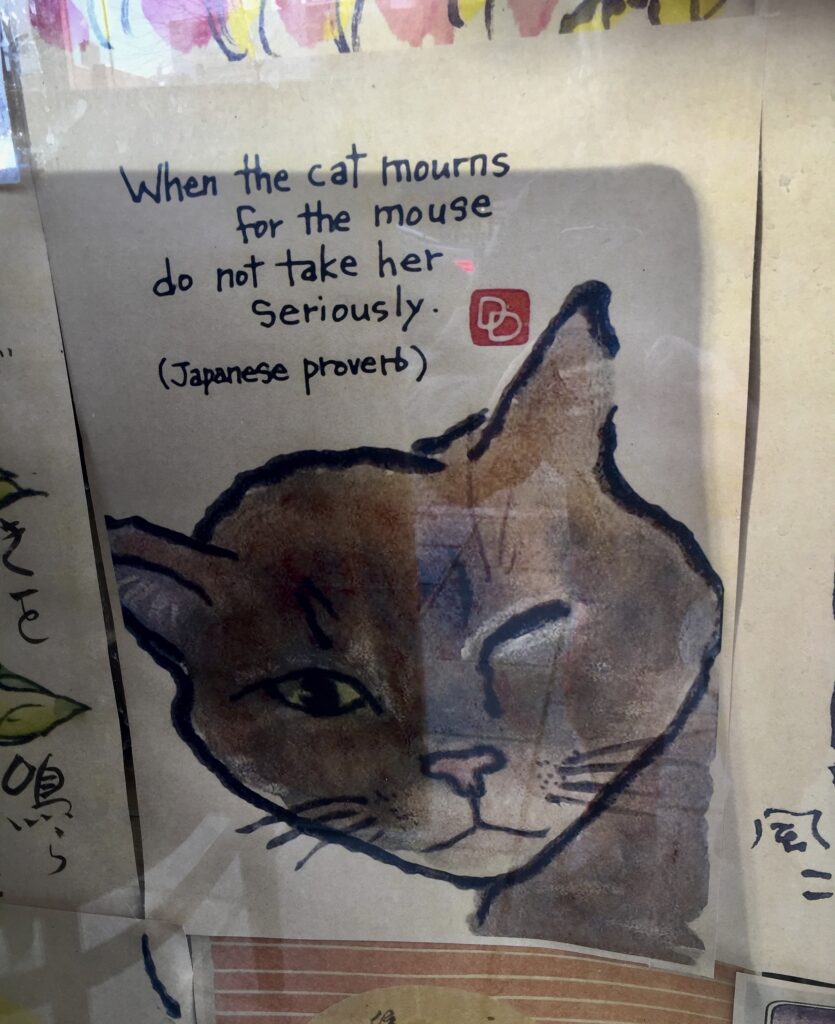
I hope you have enjoyed today’s blog.
If you would like to follow me on Instagram here is the link …
